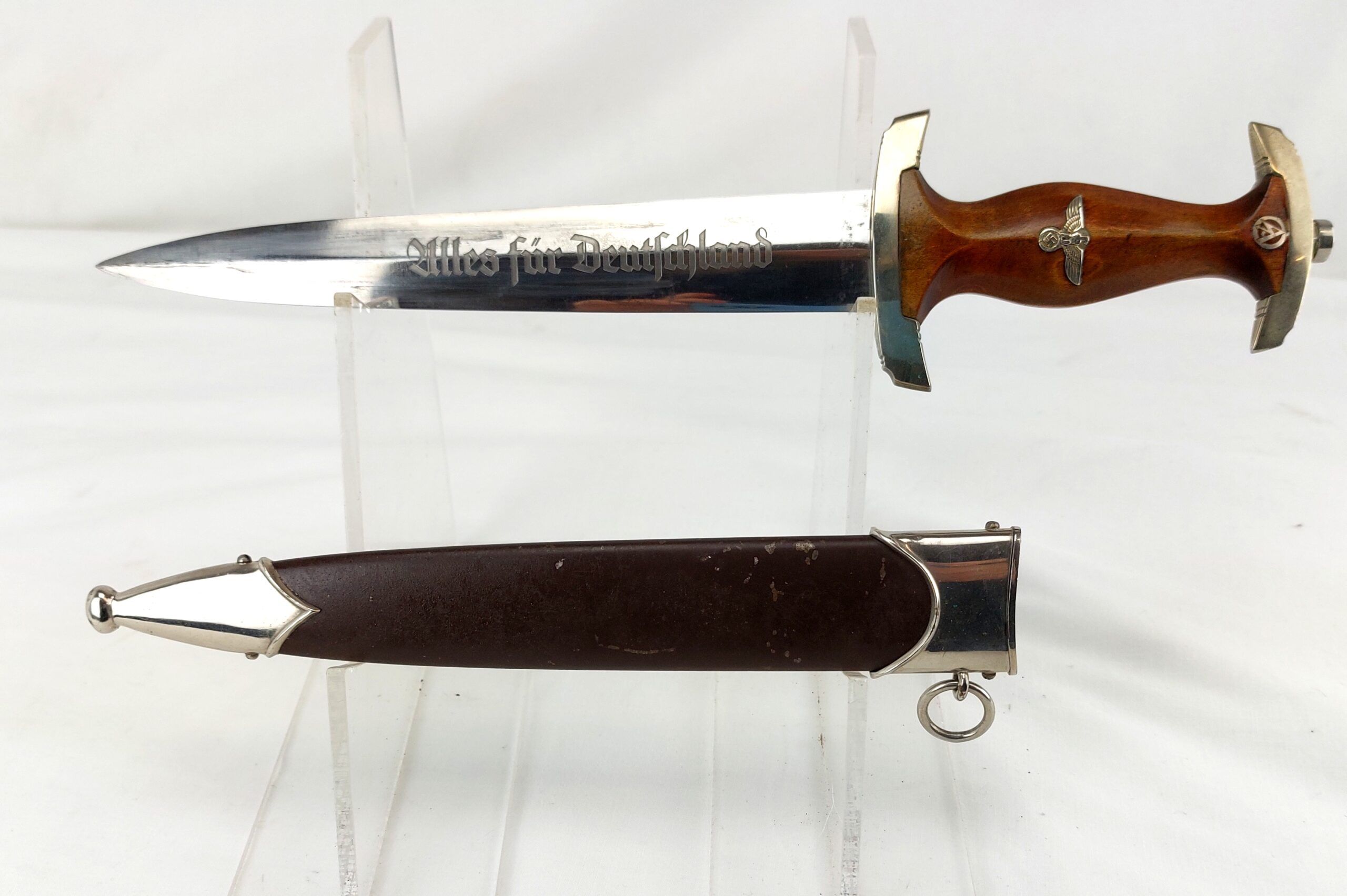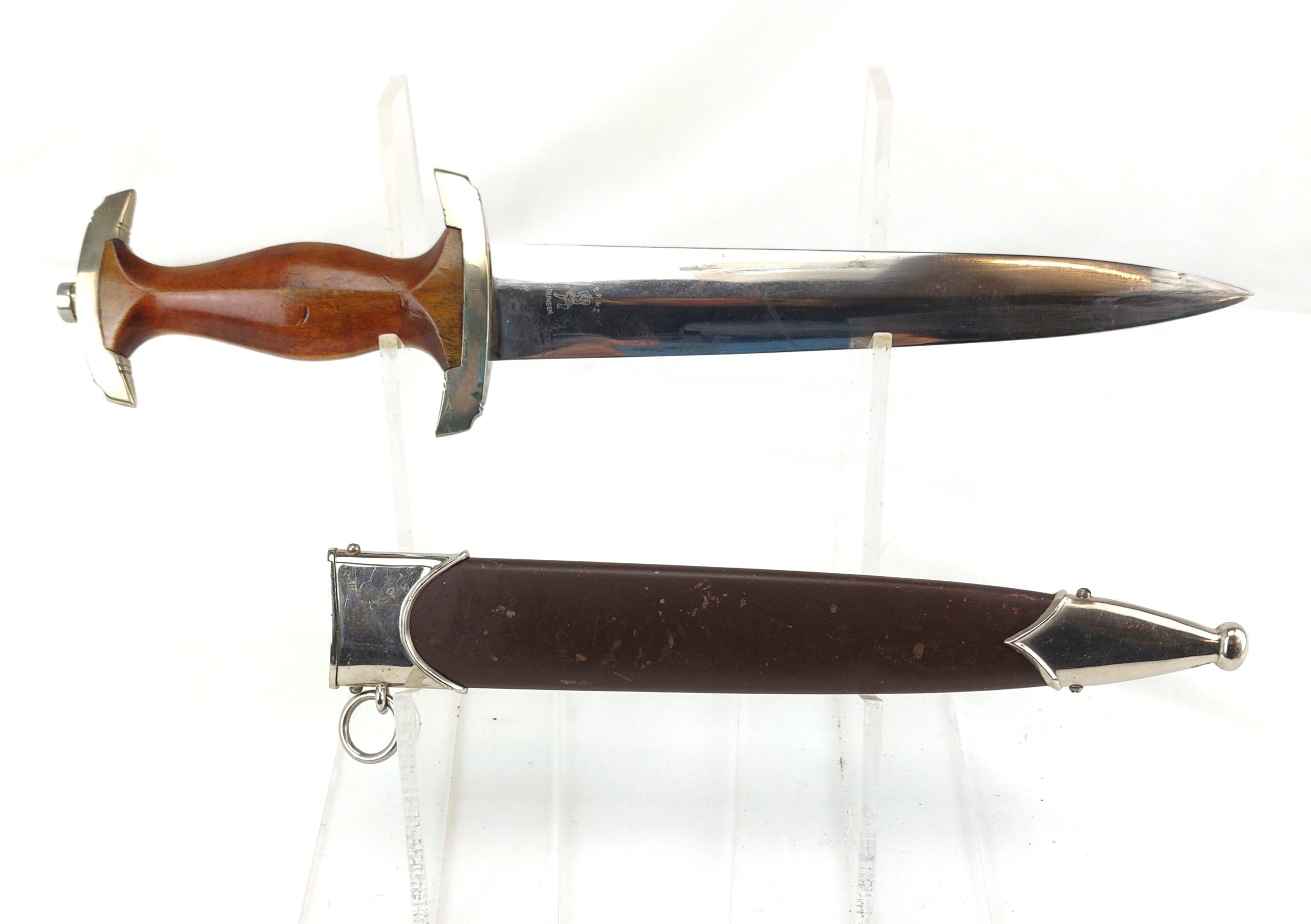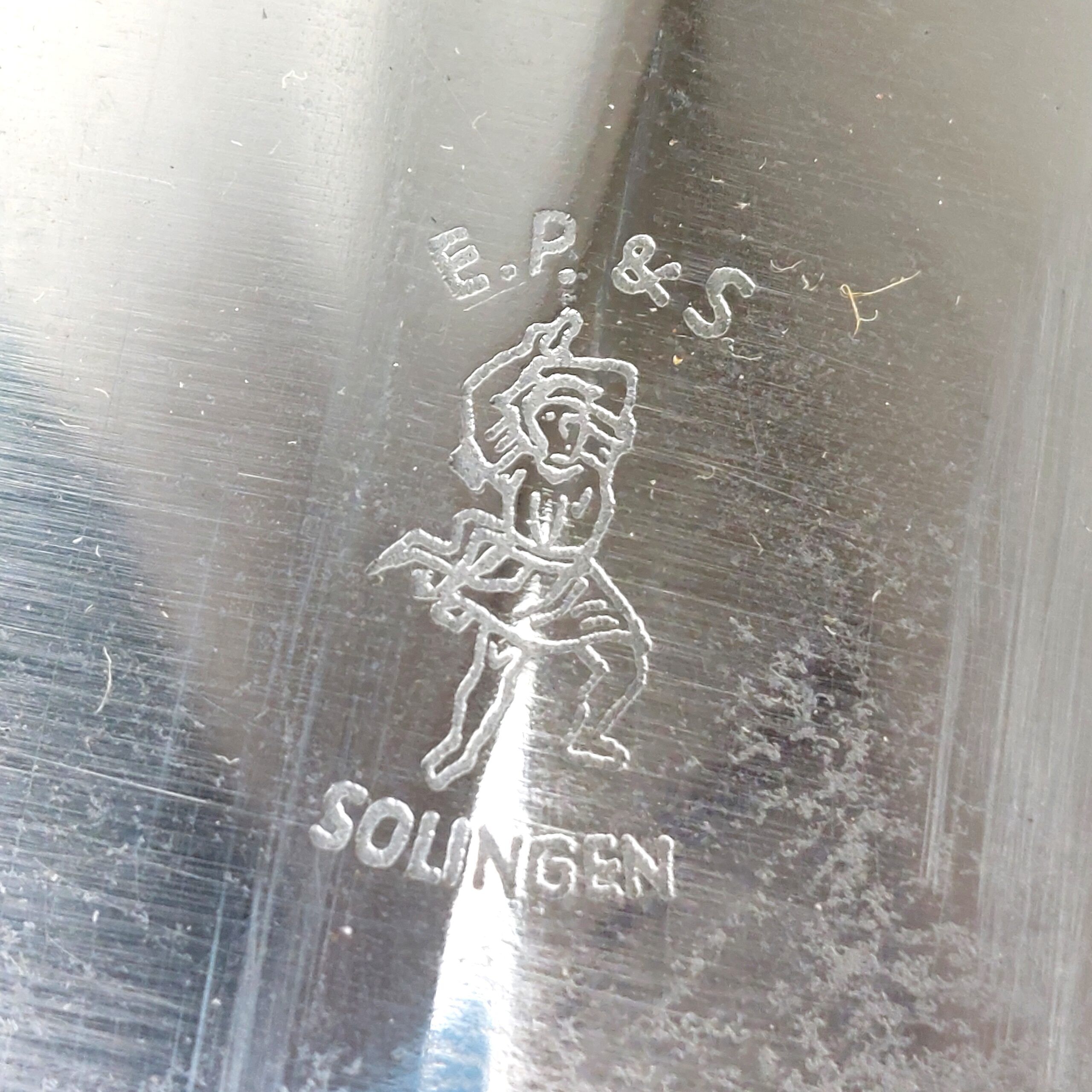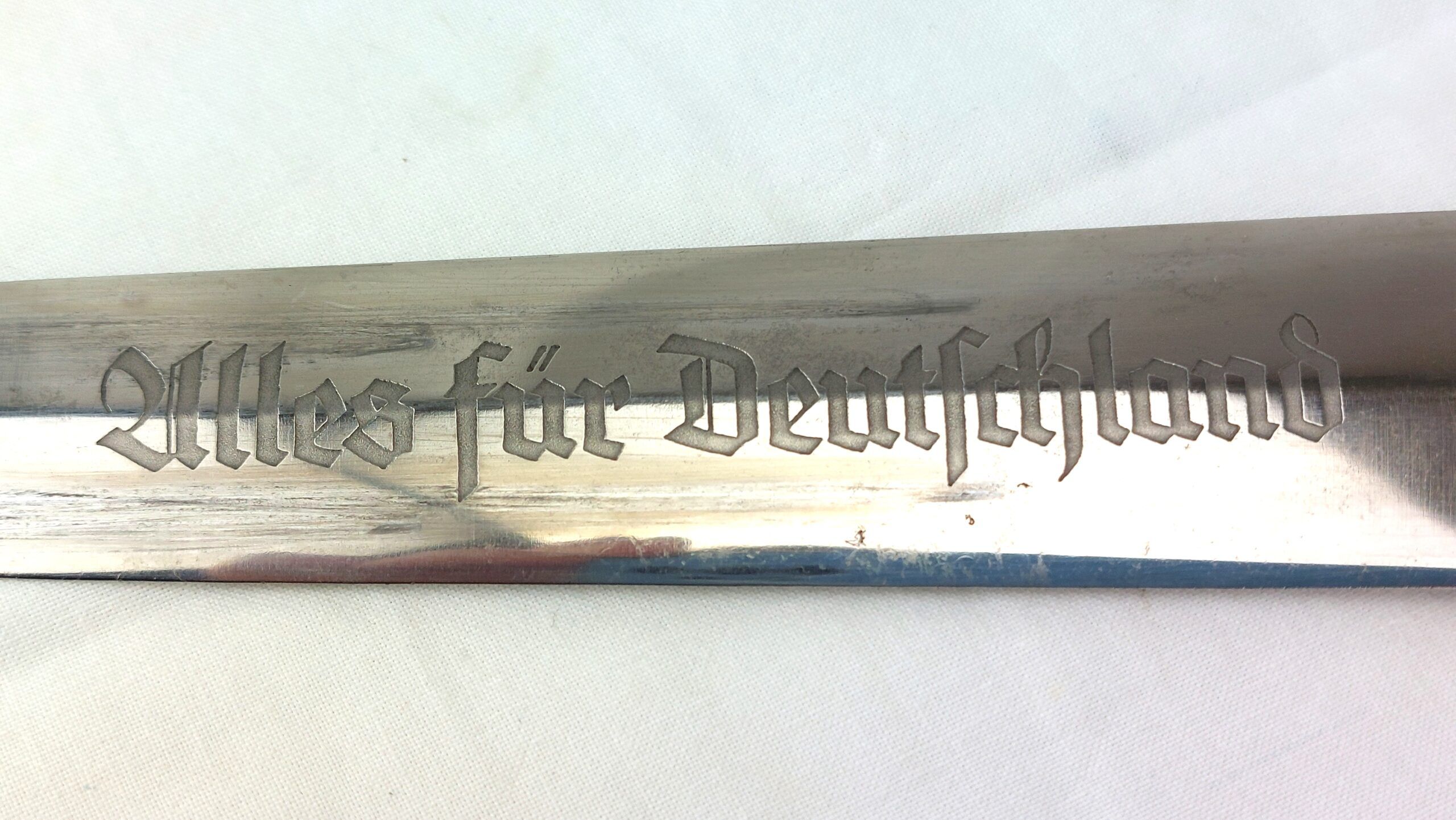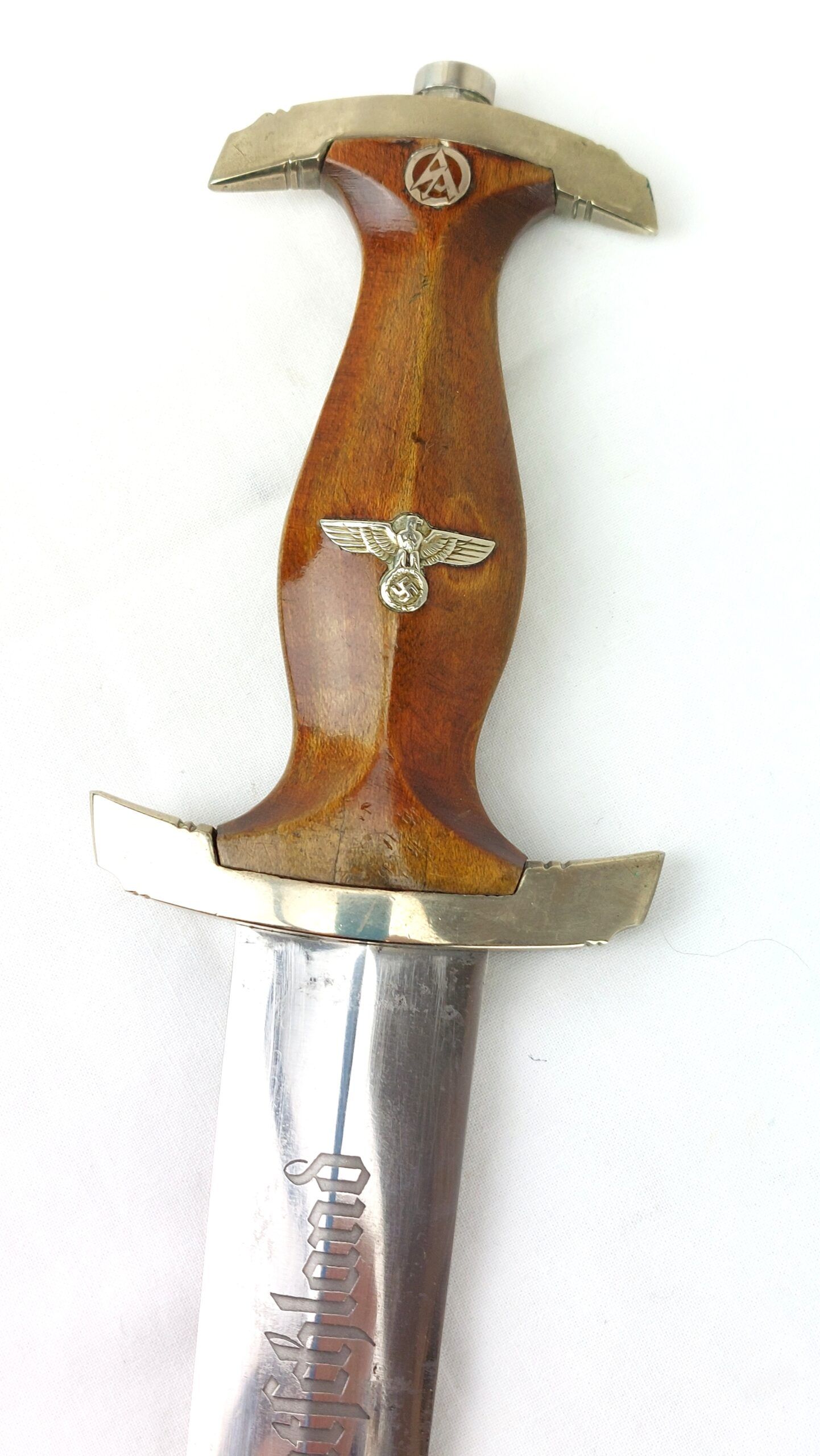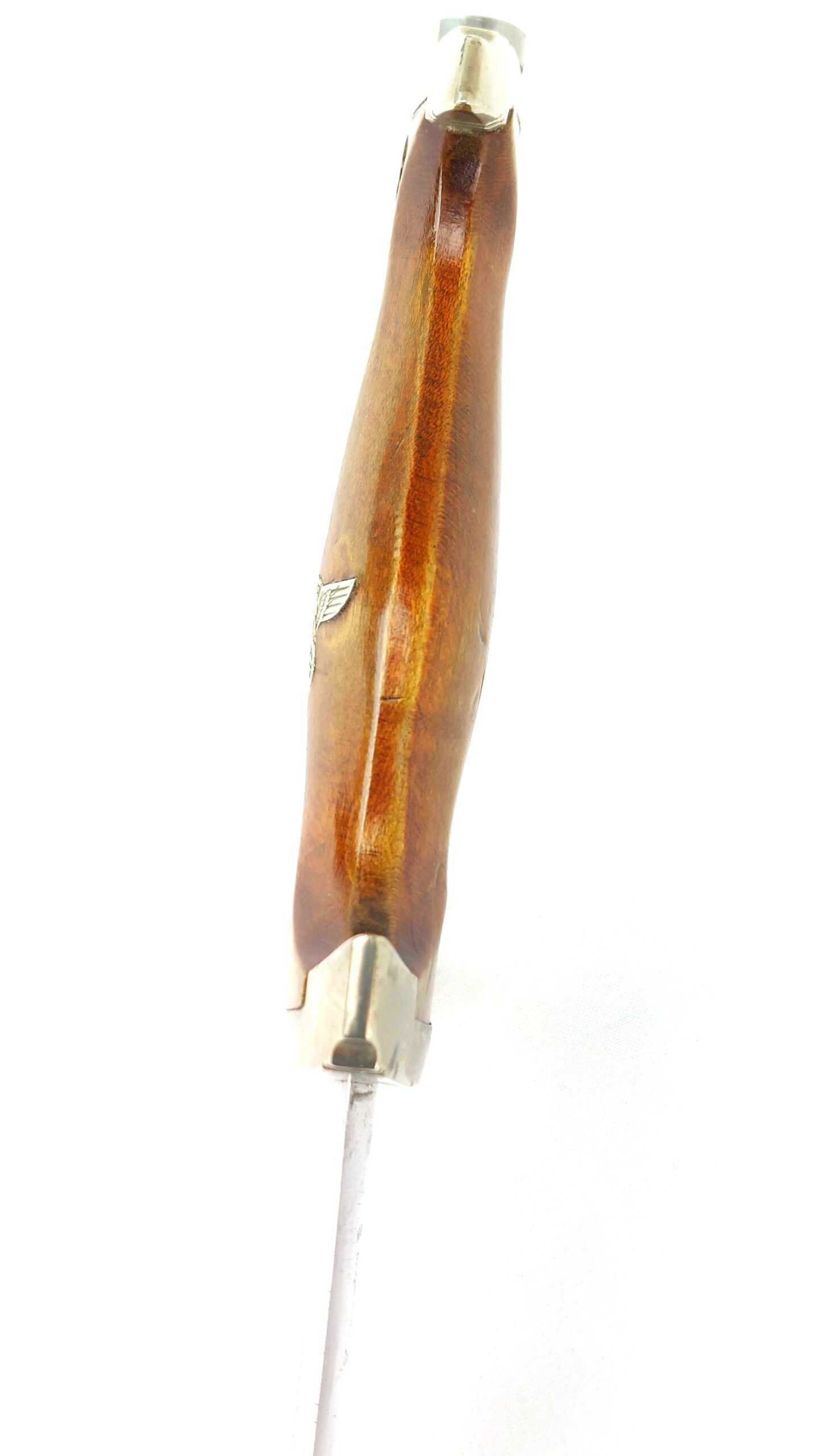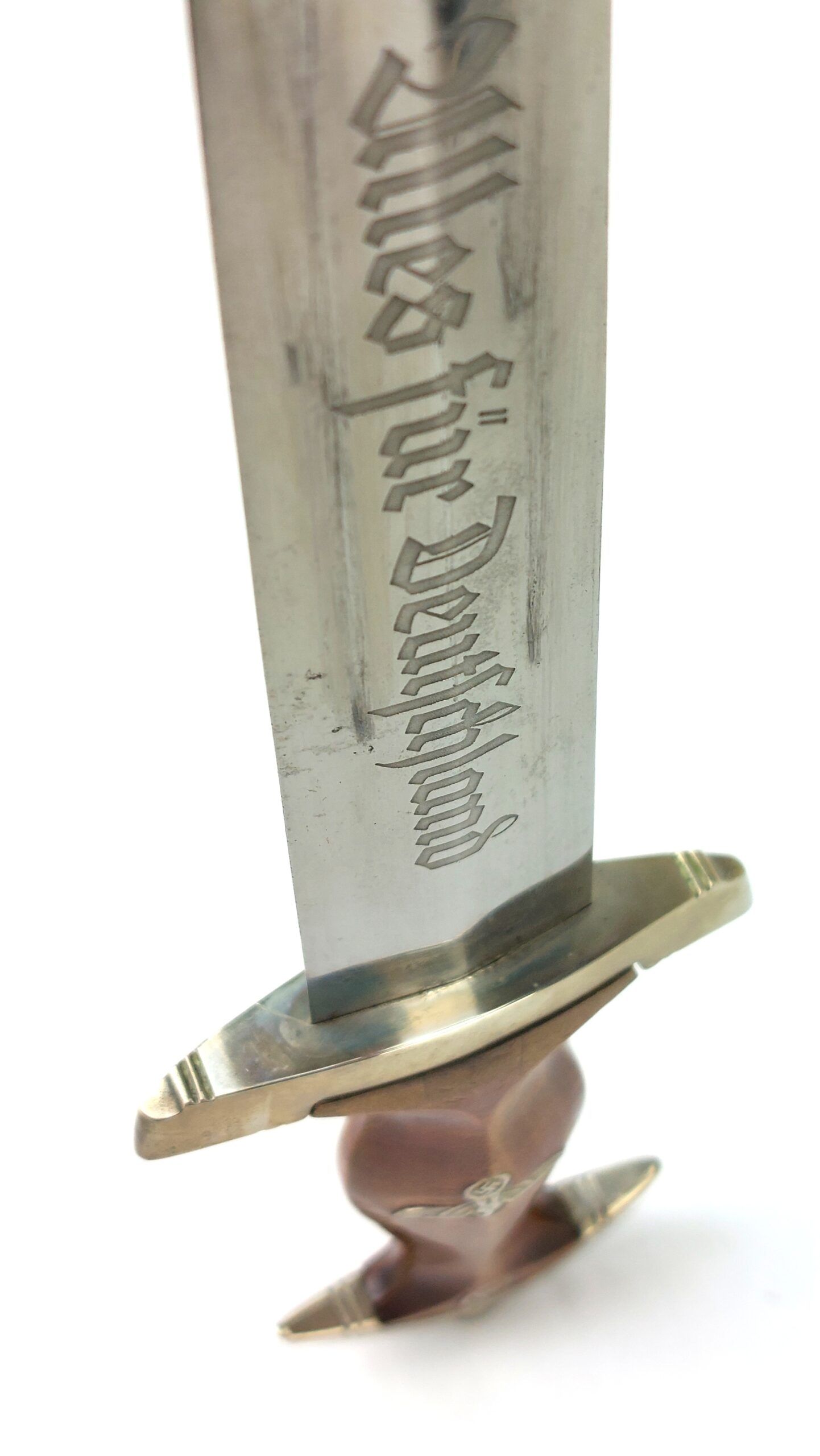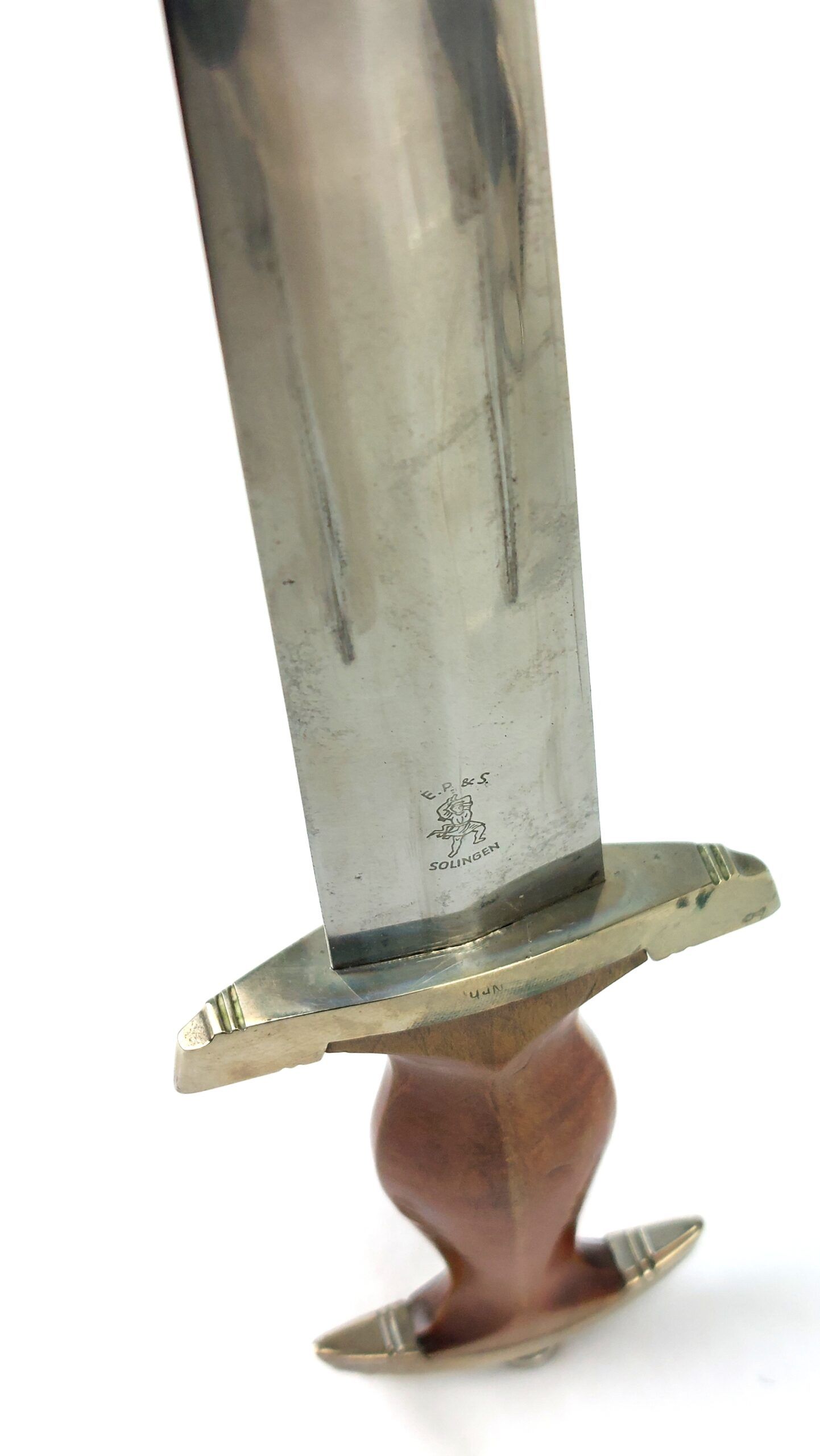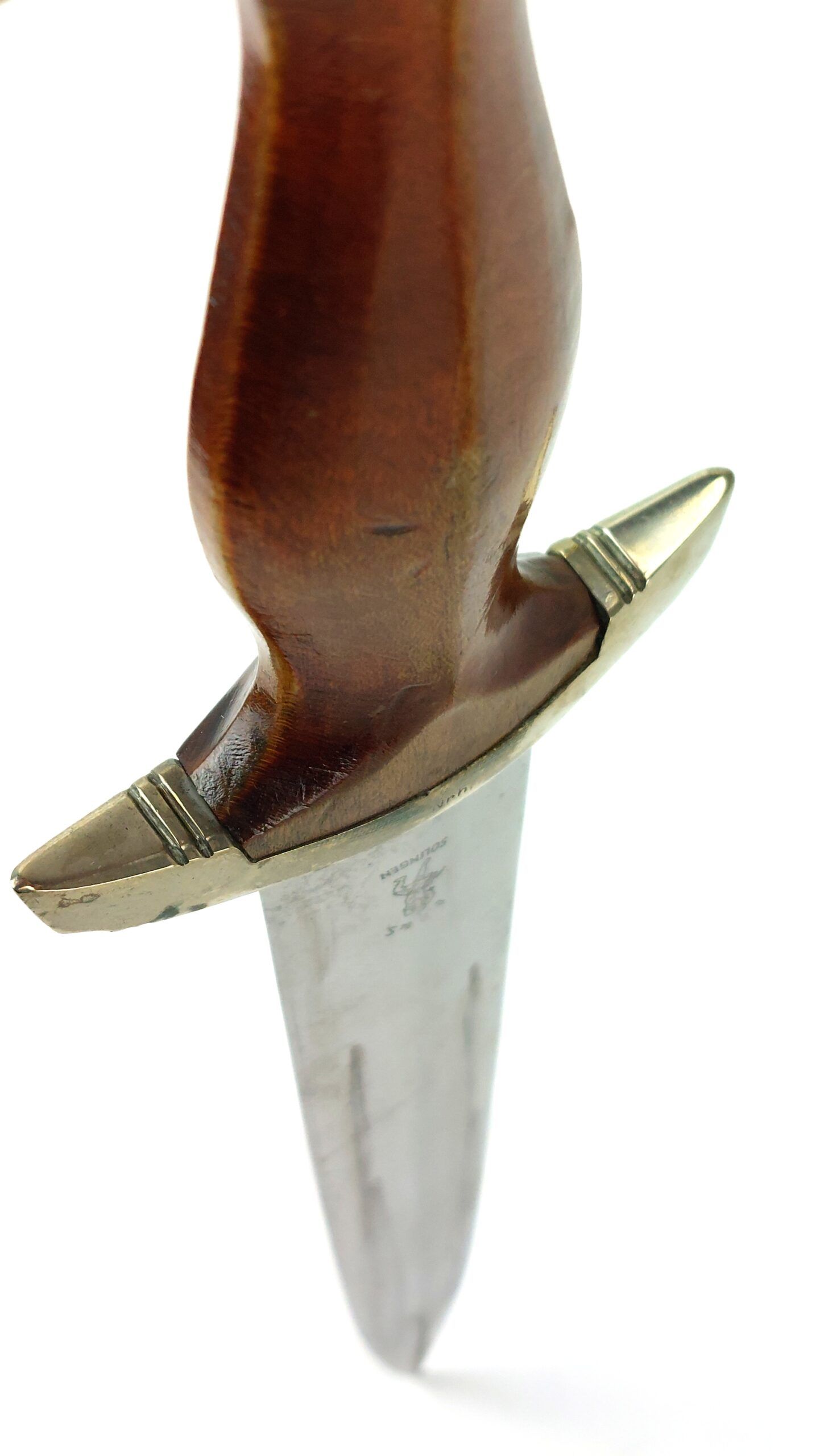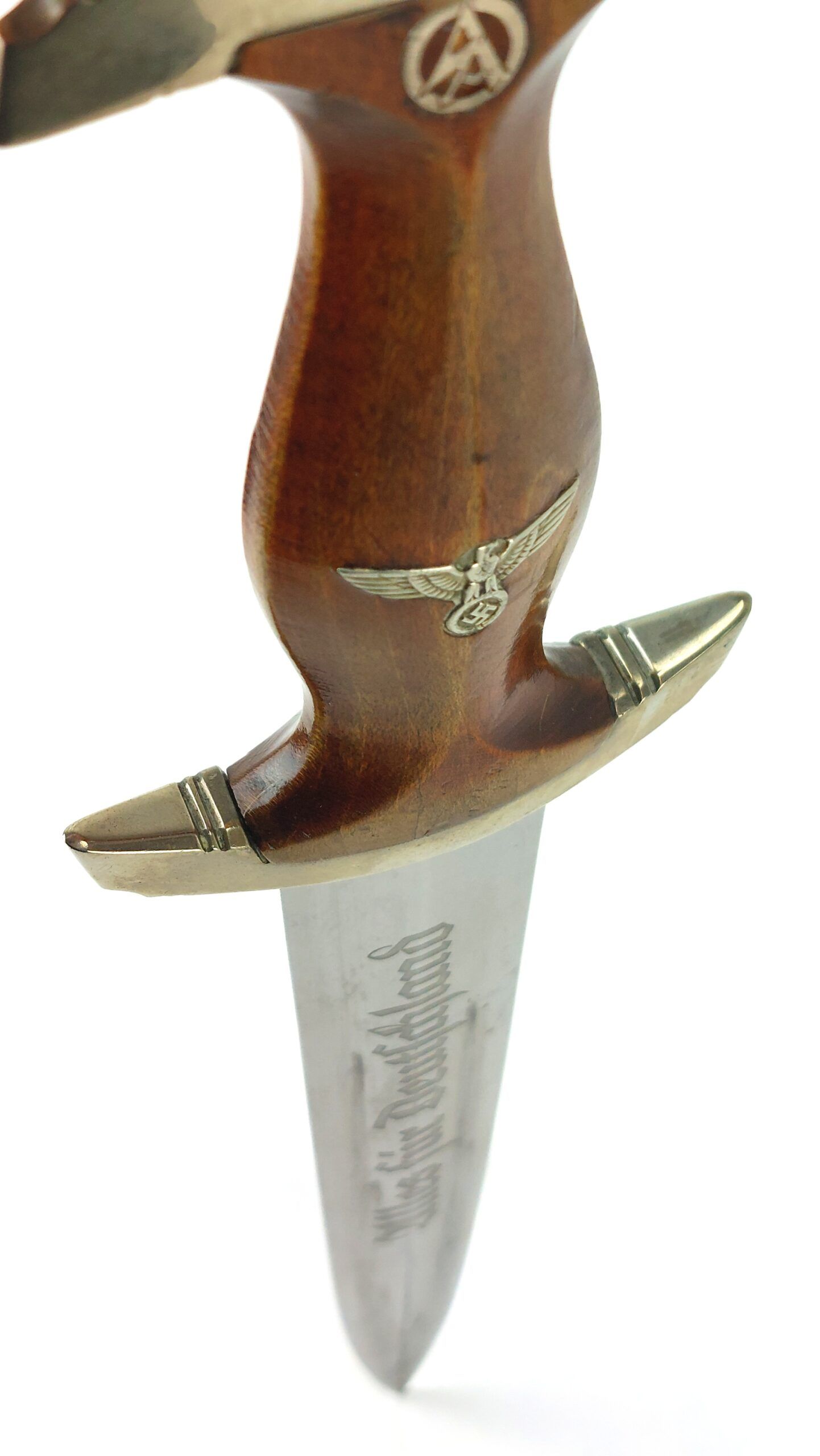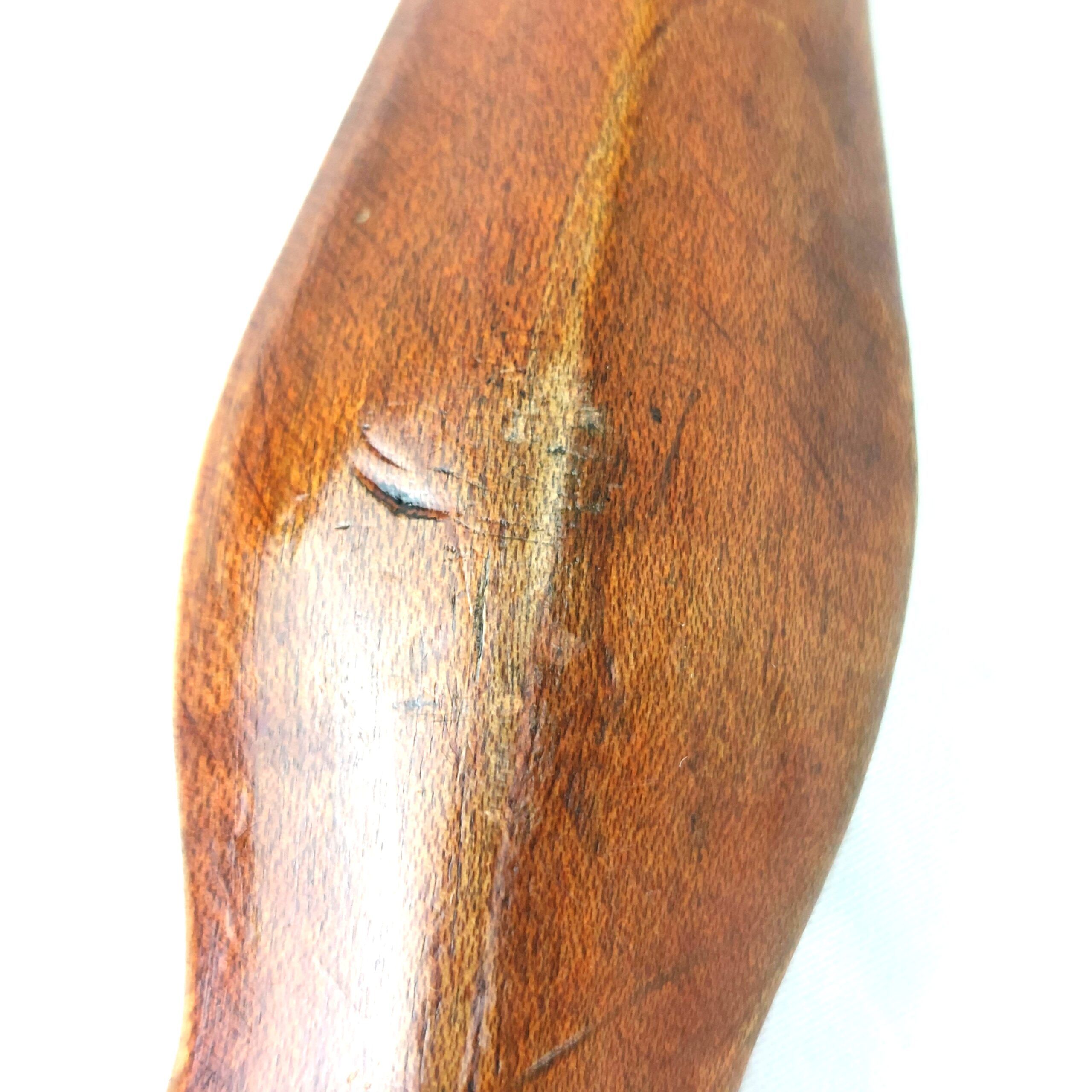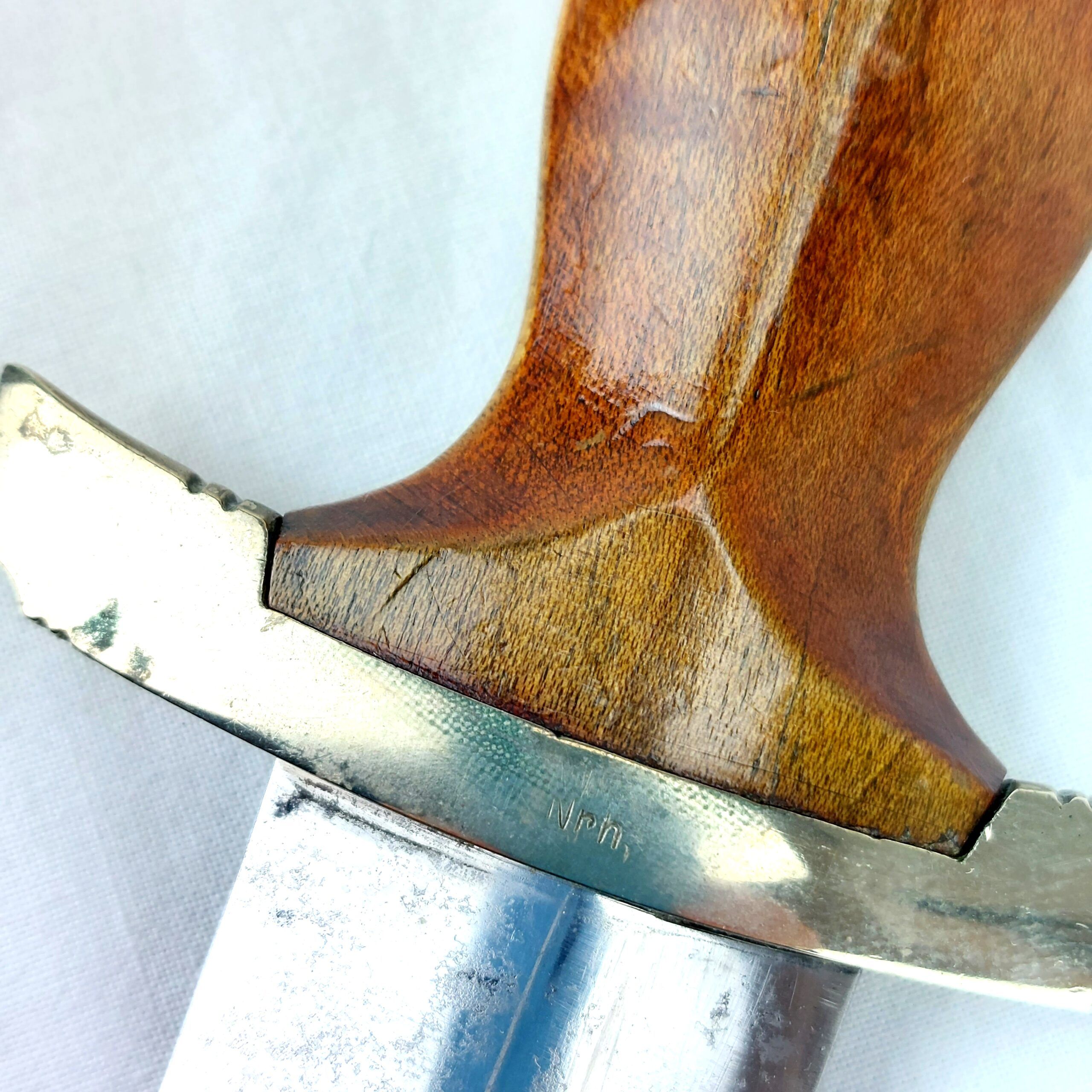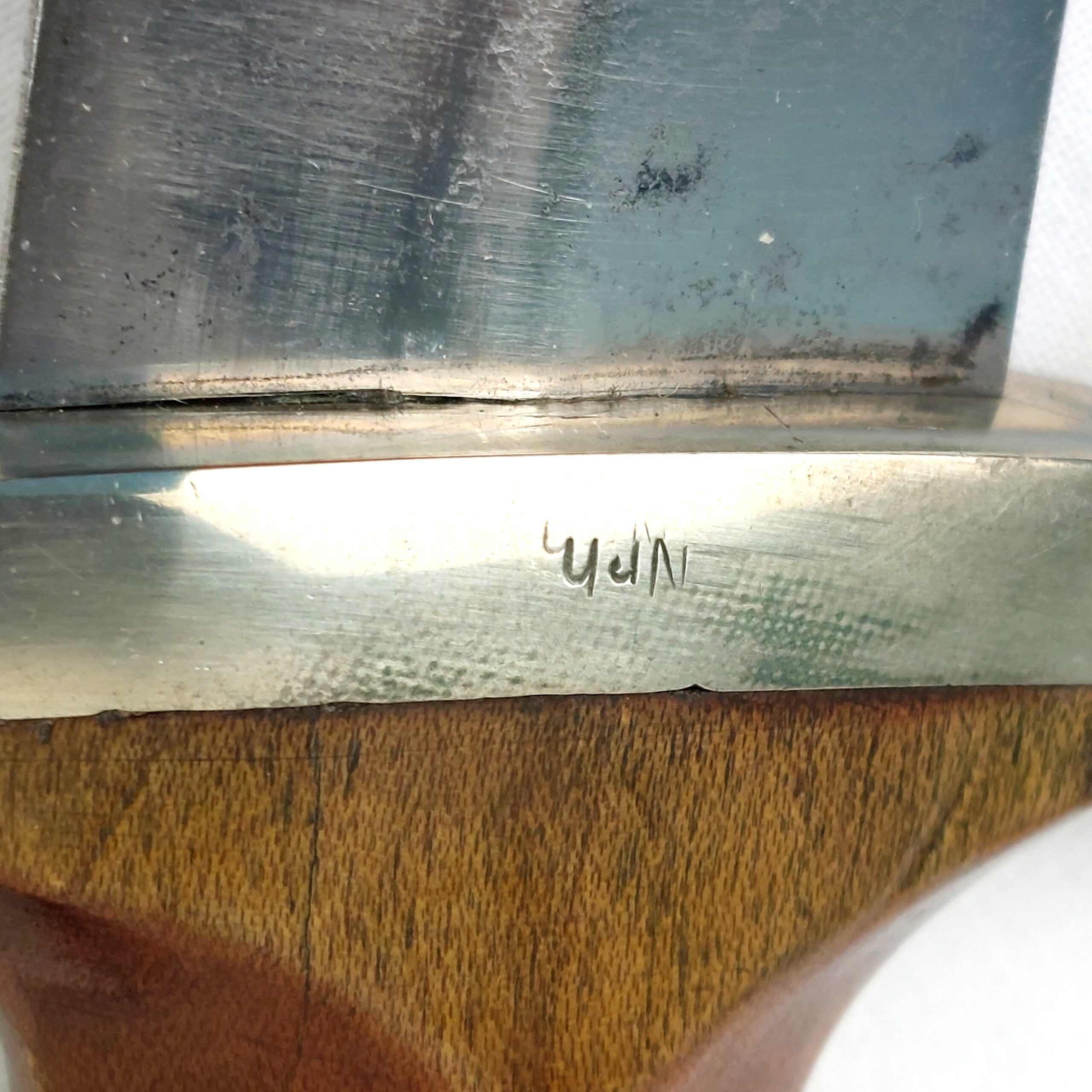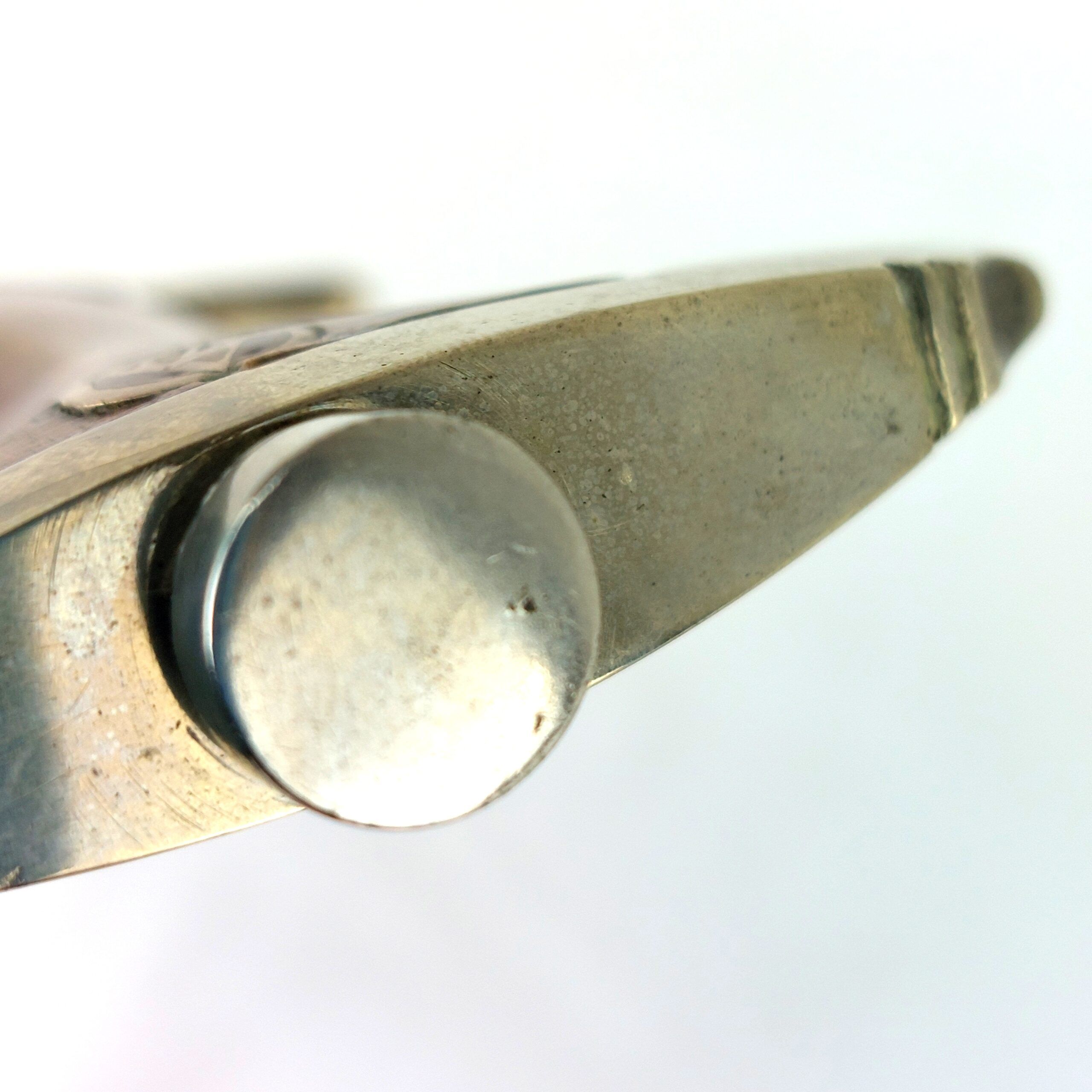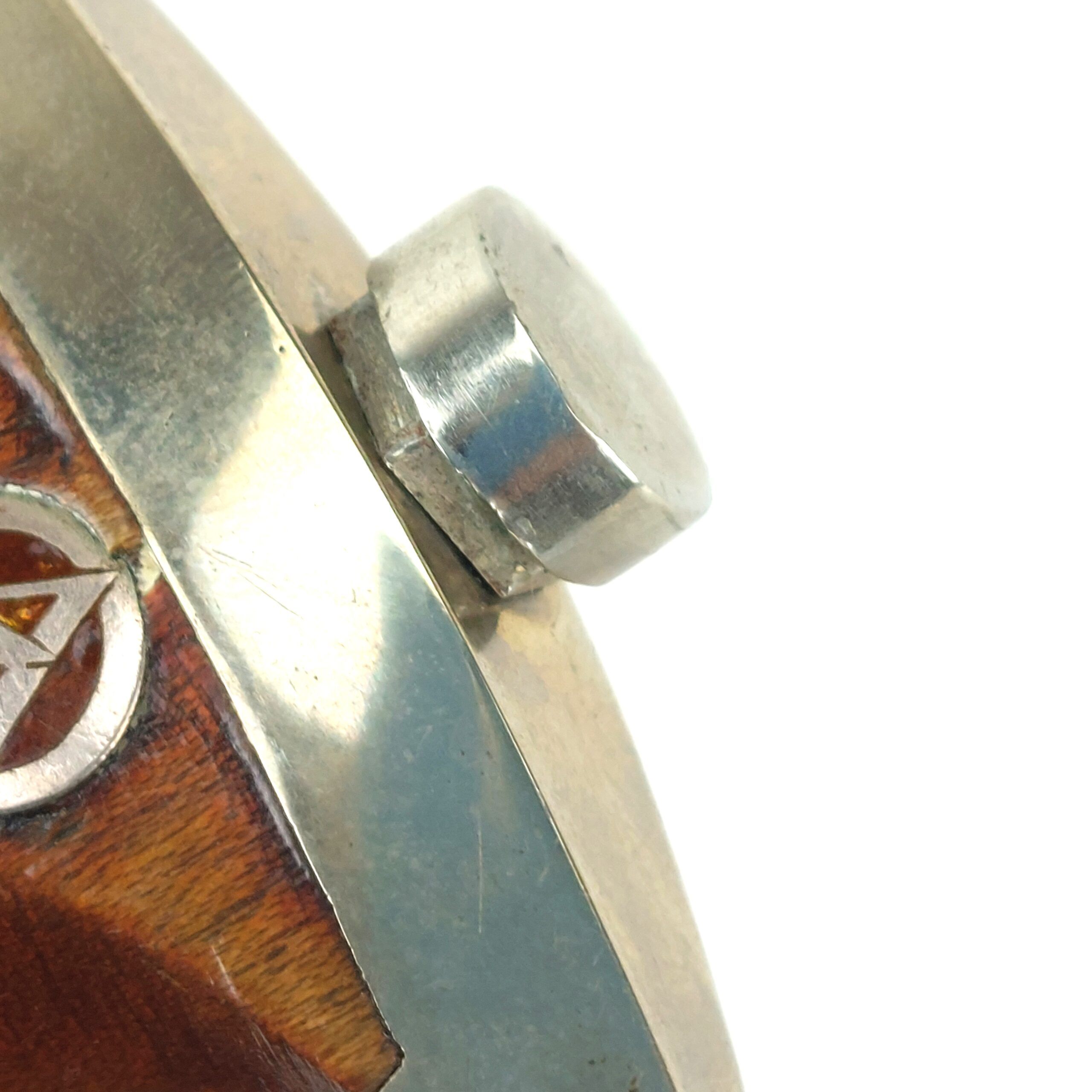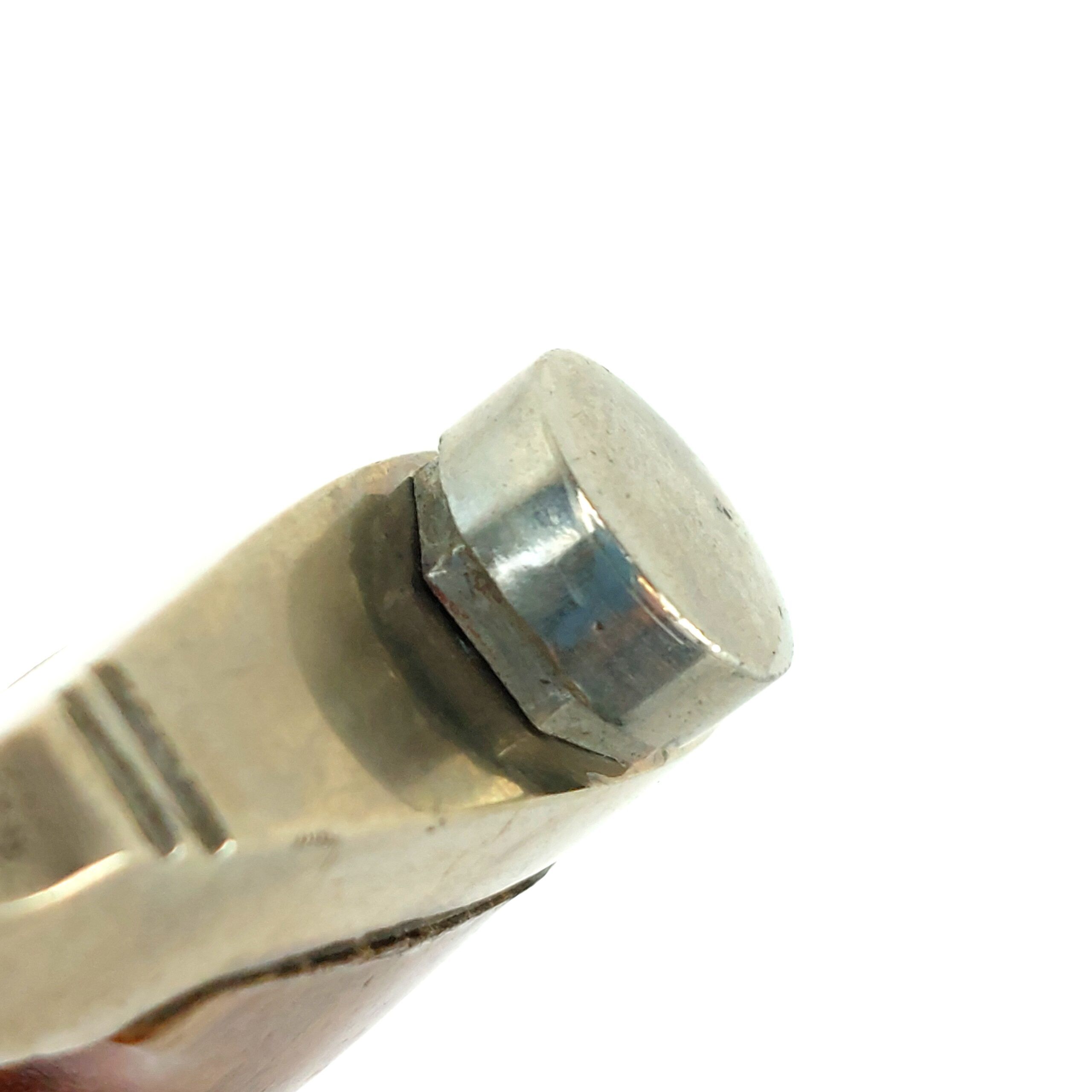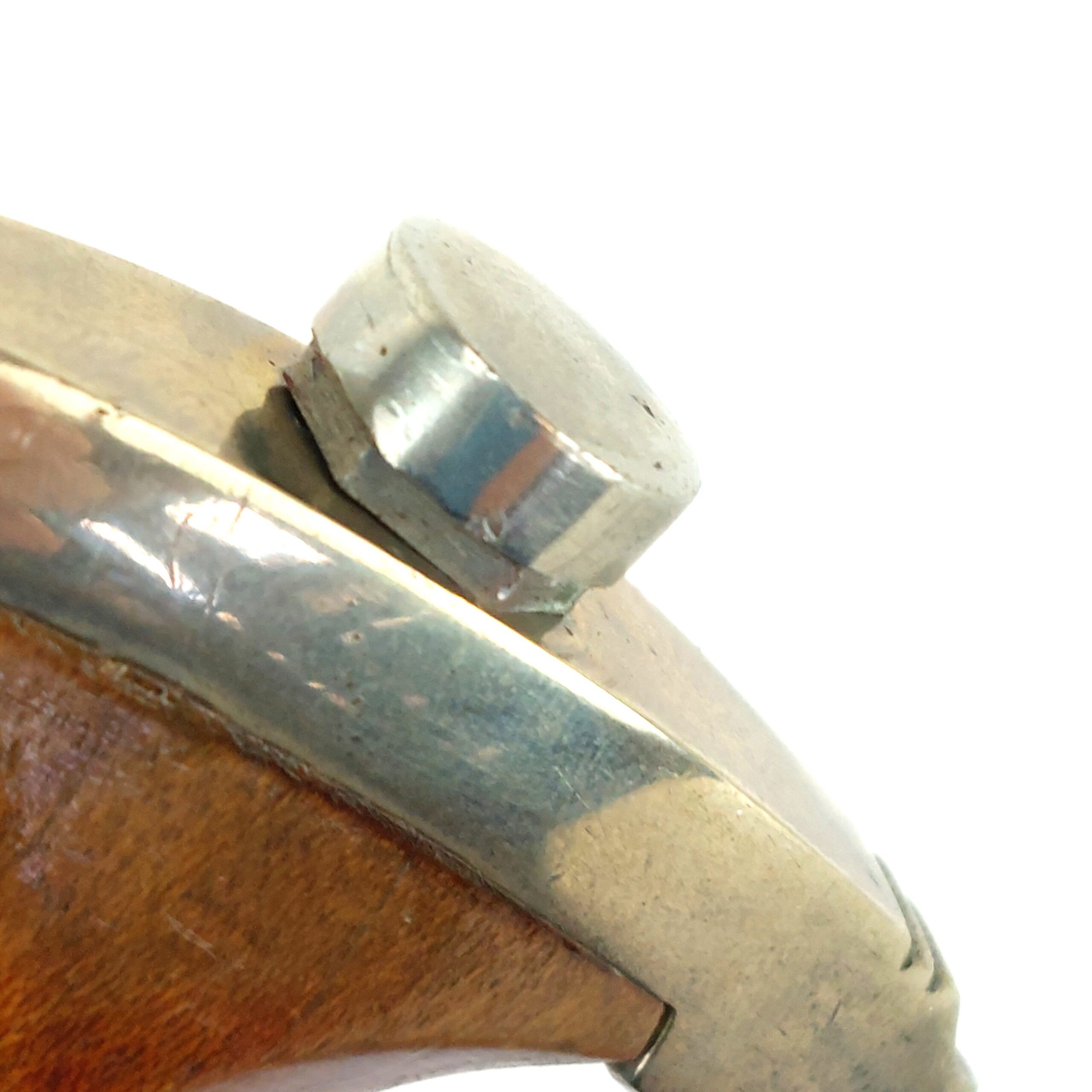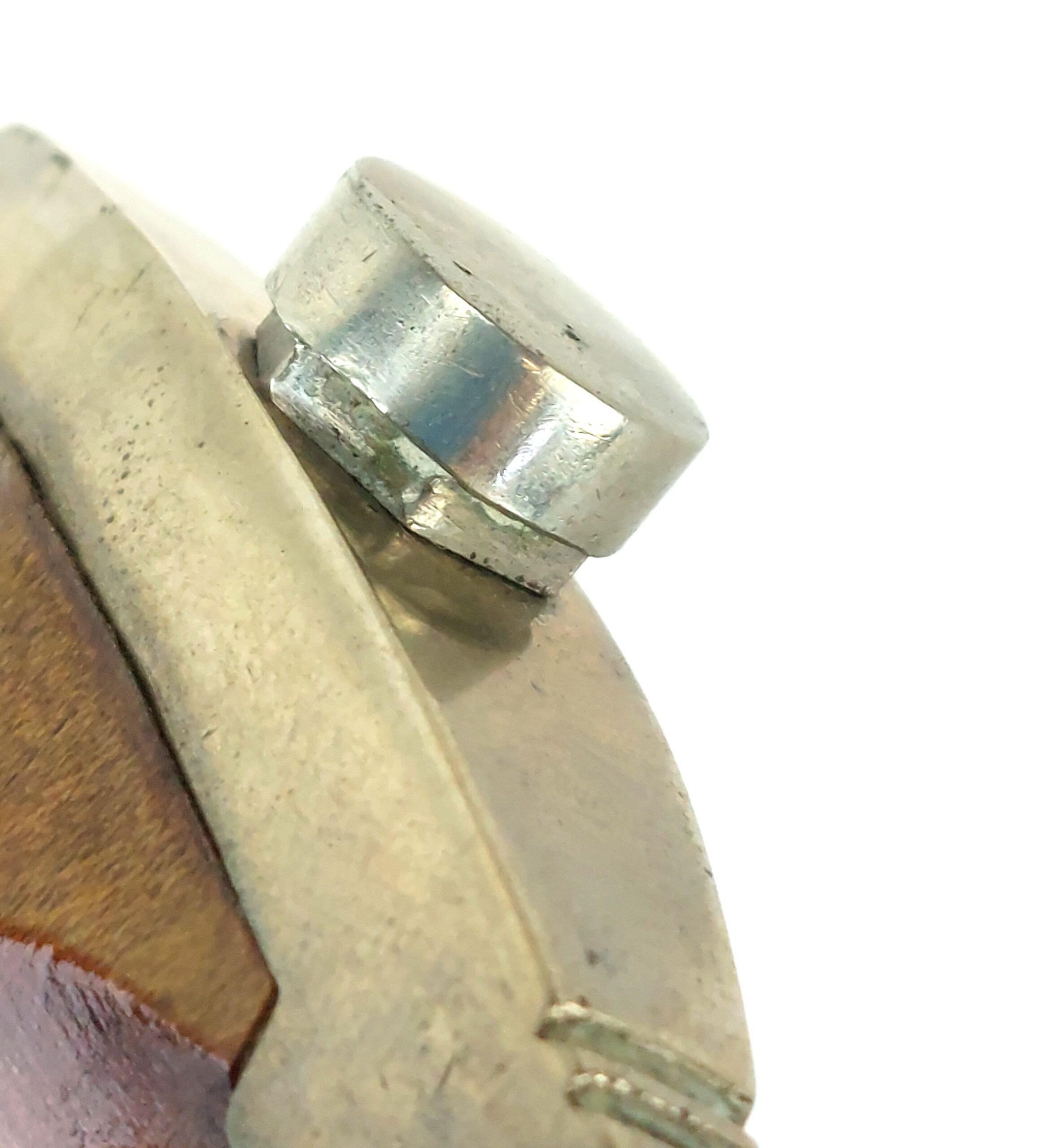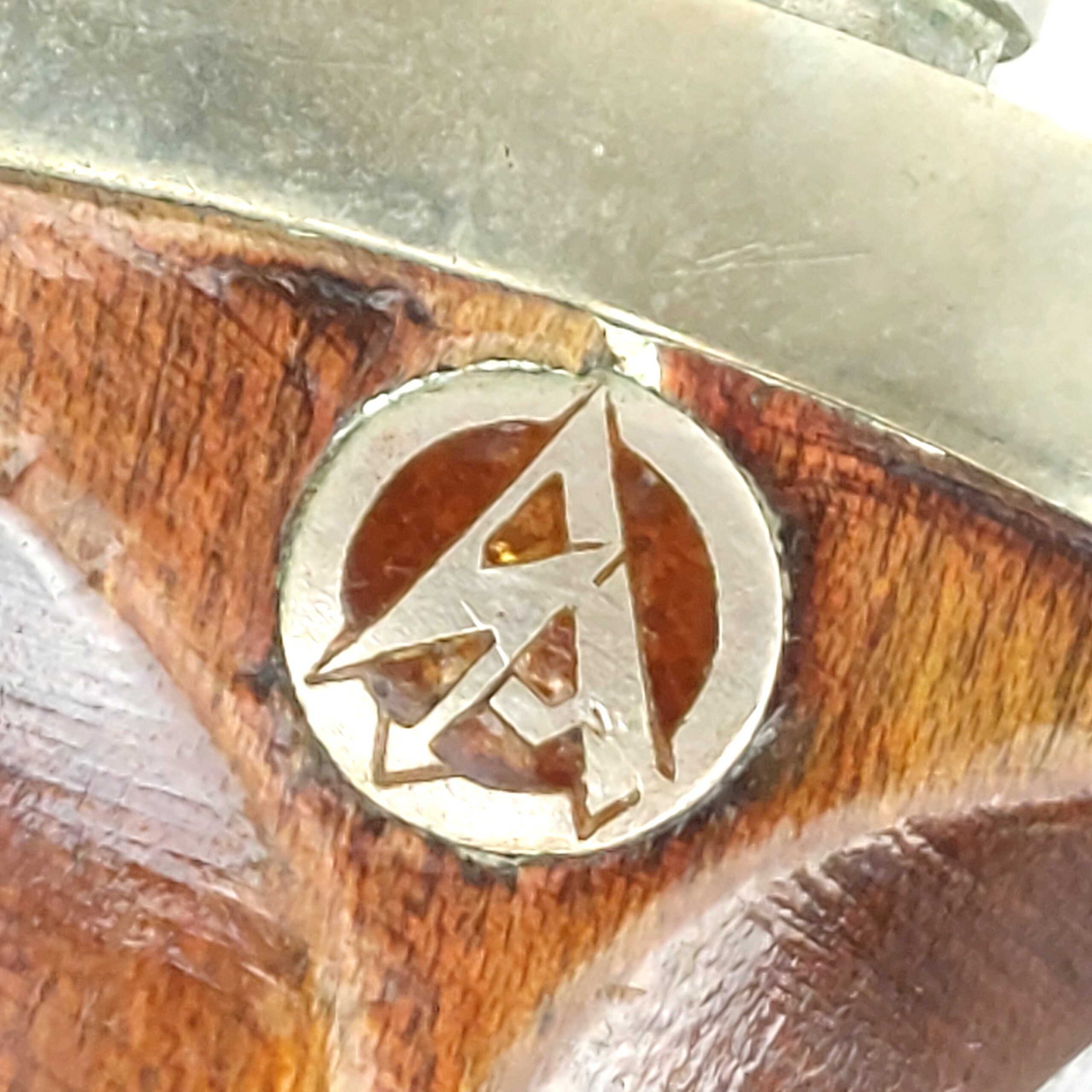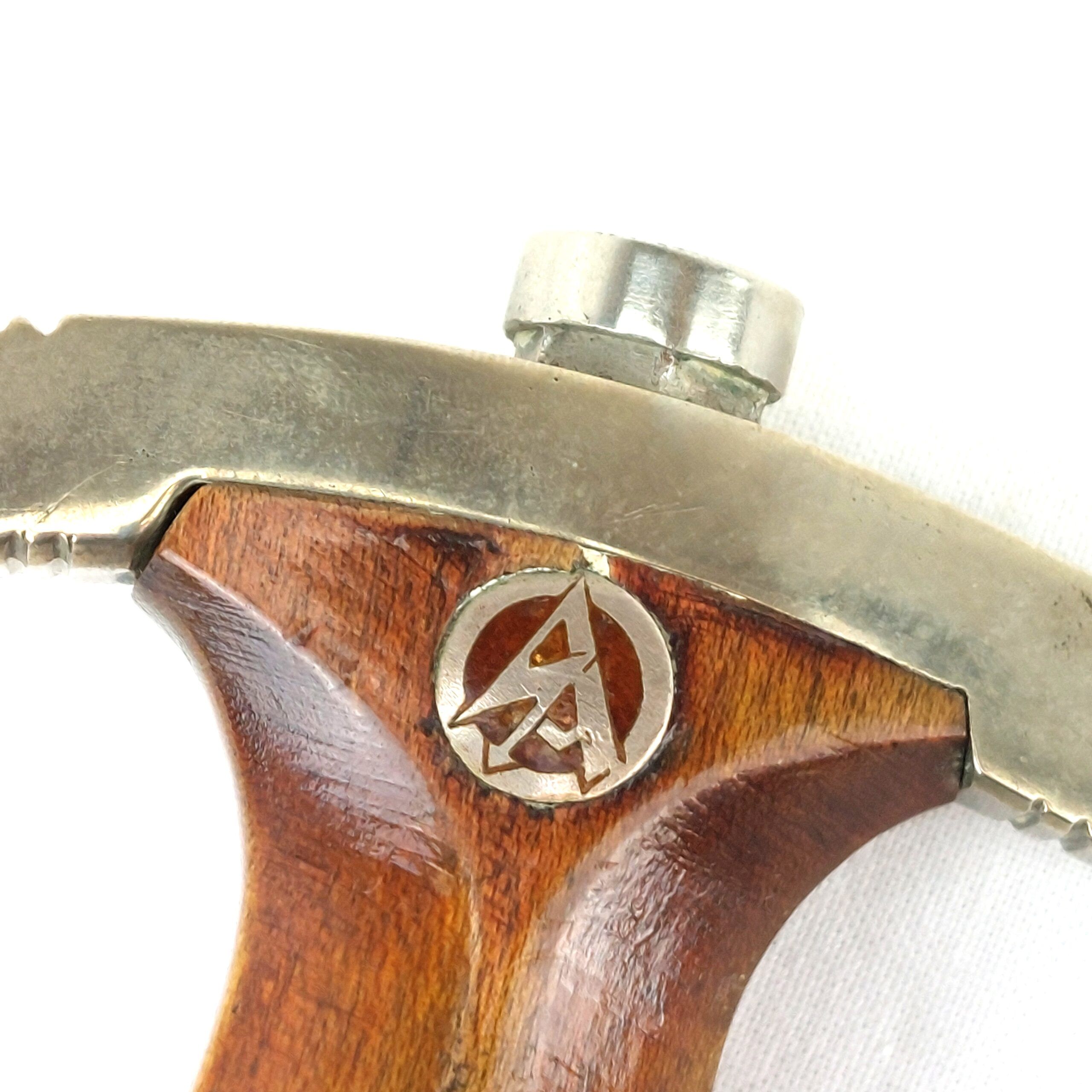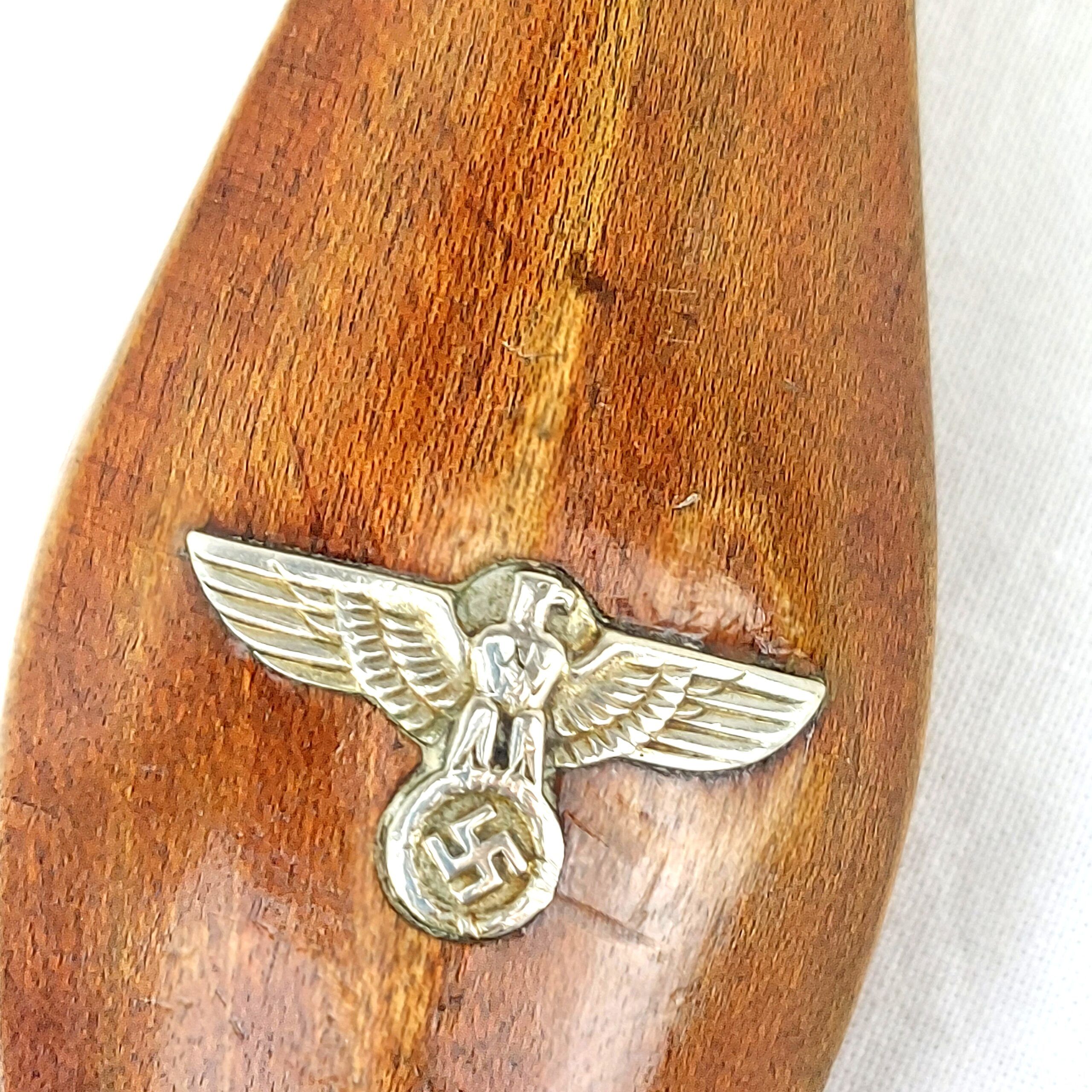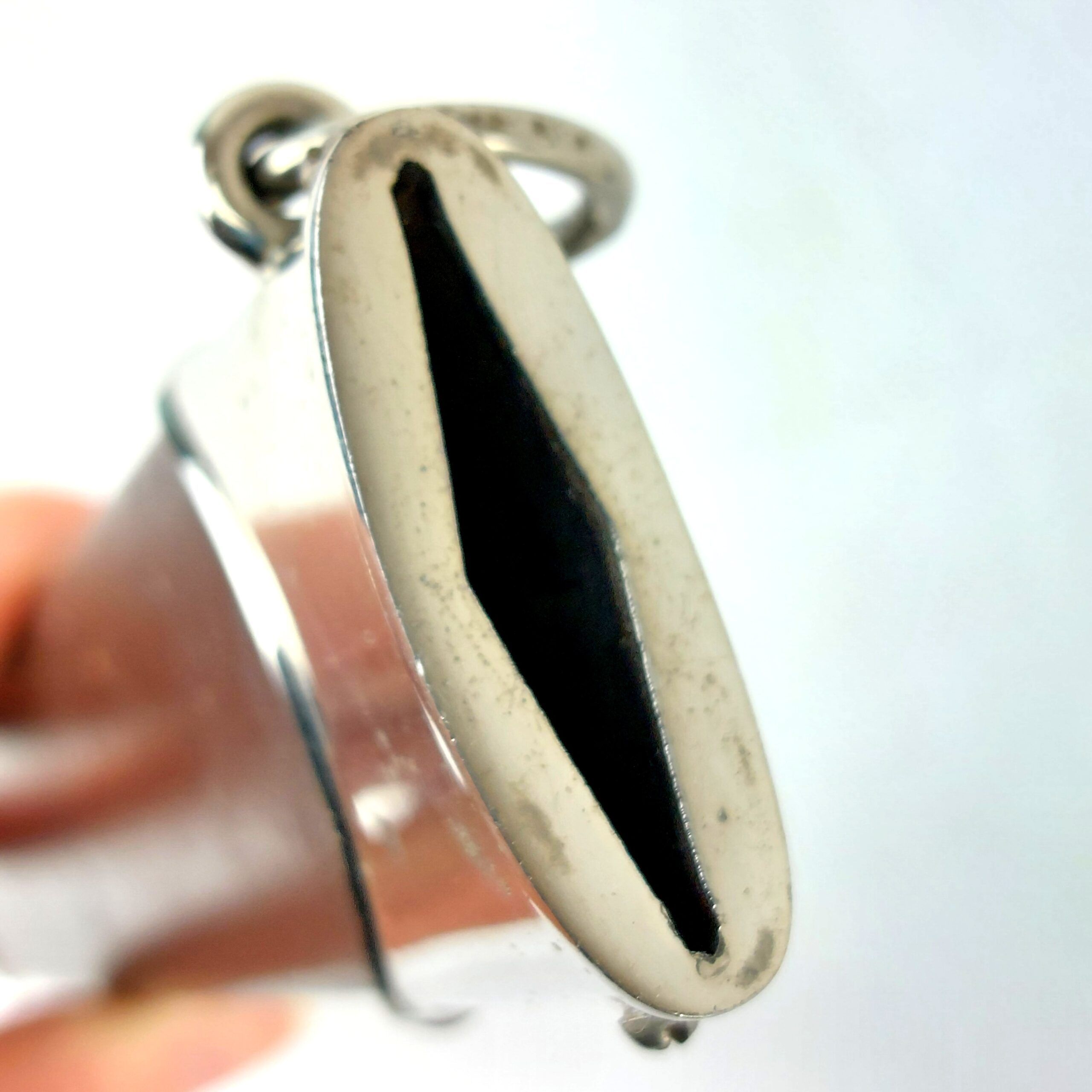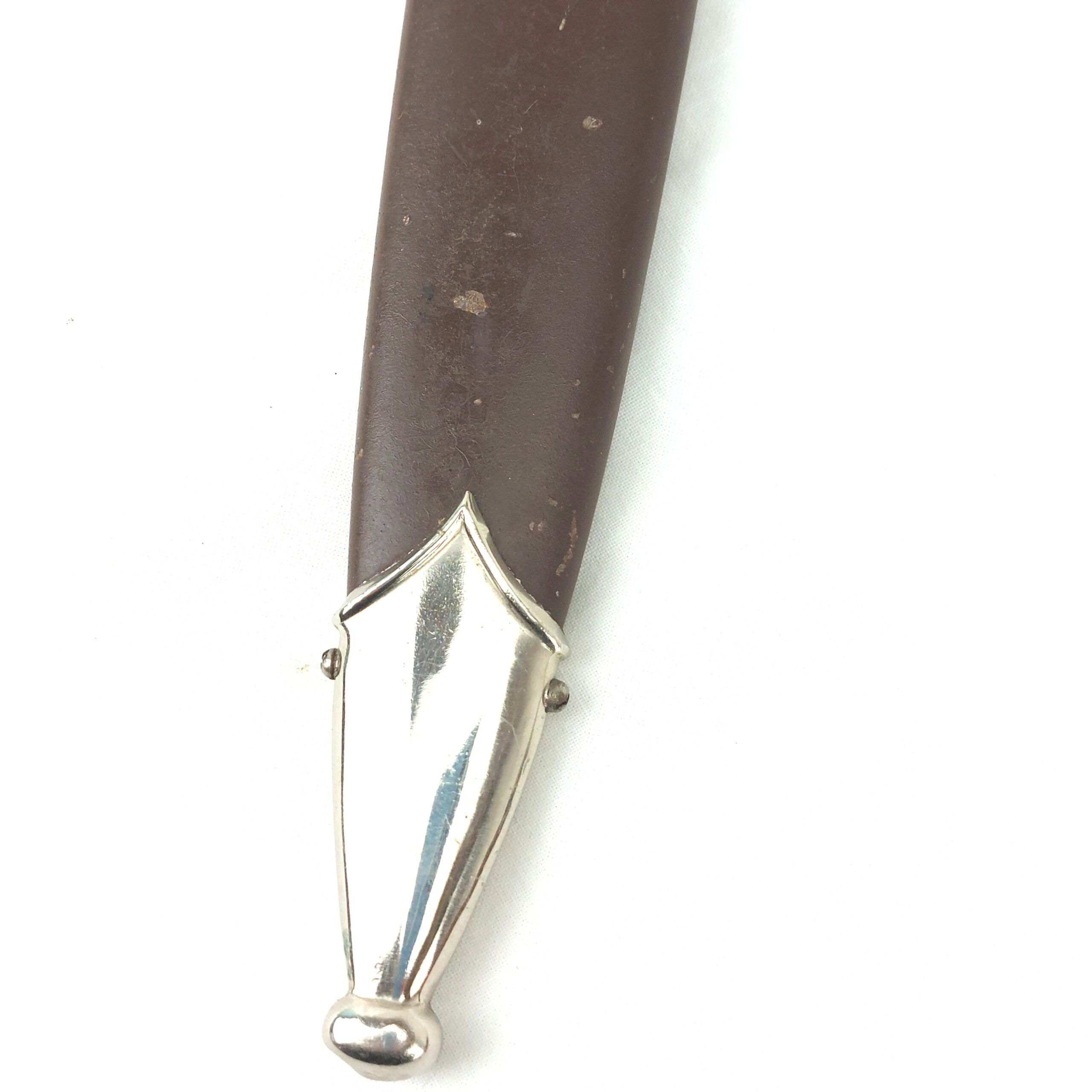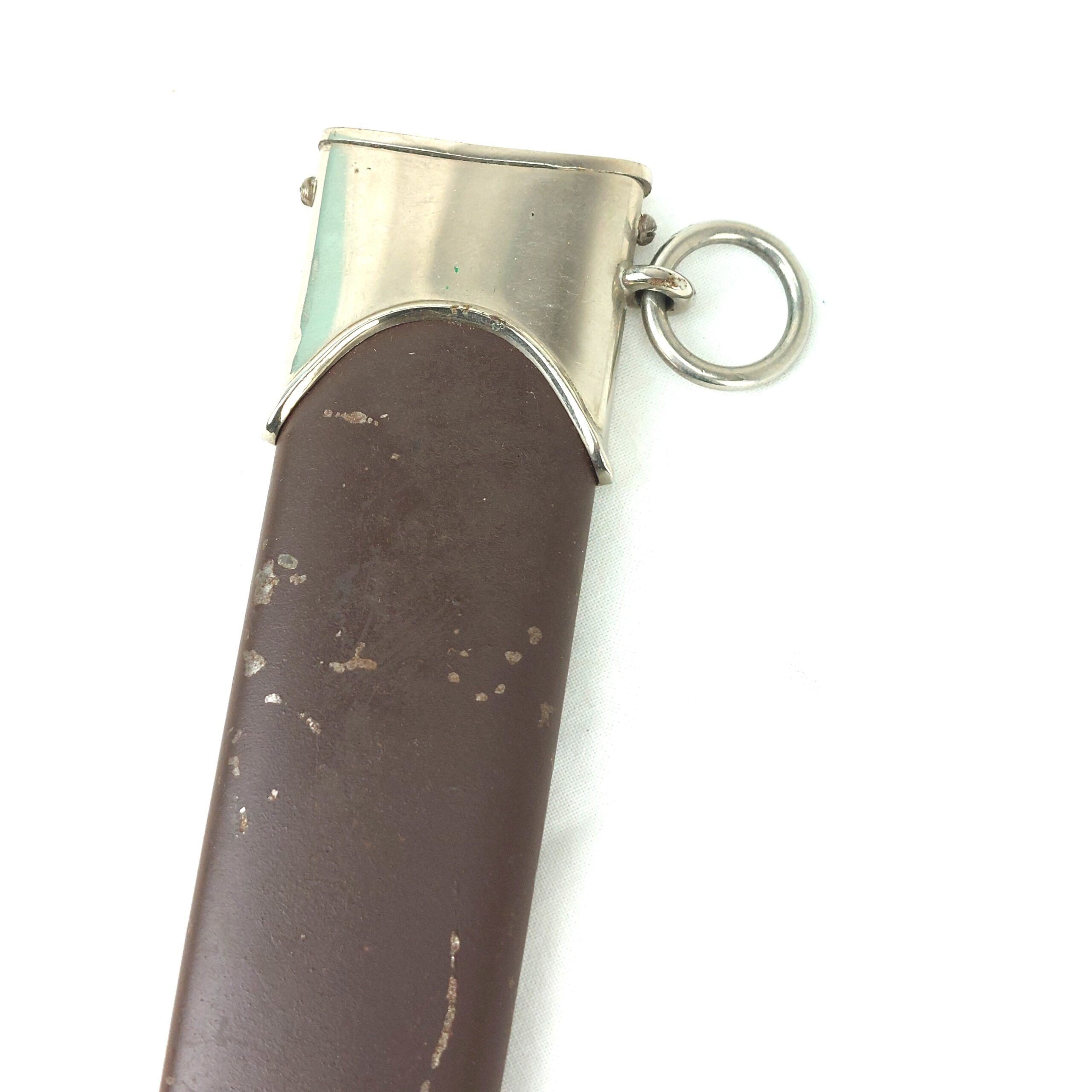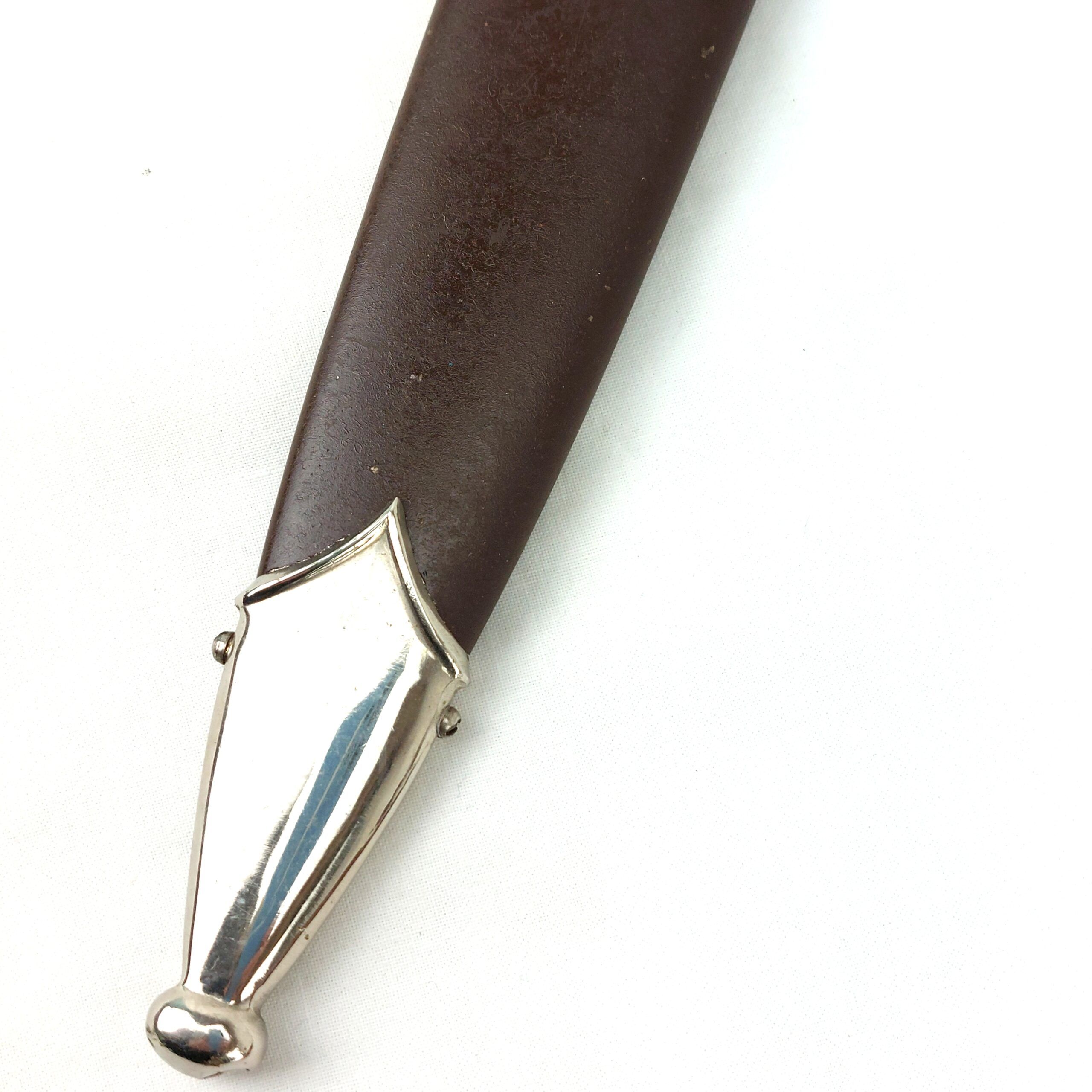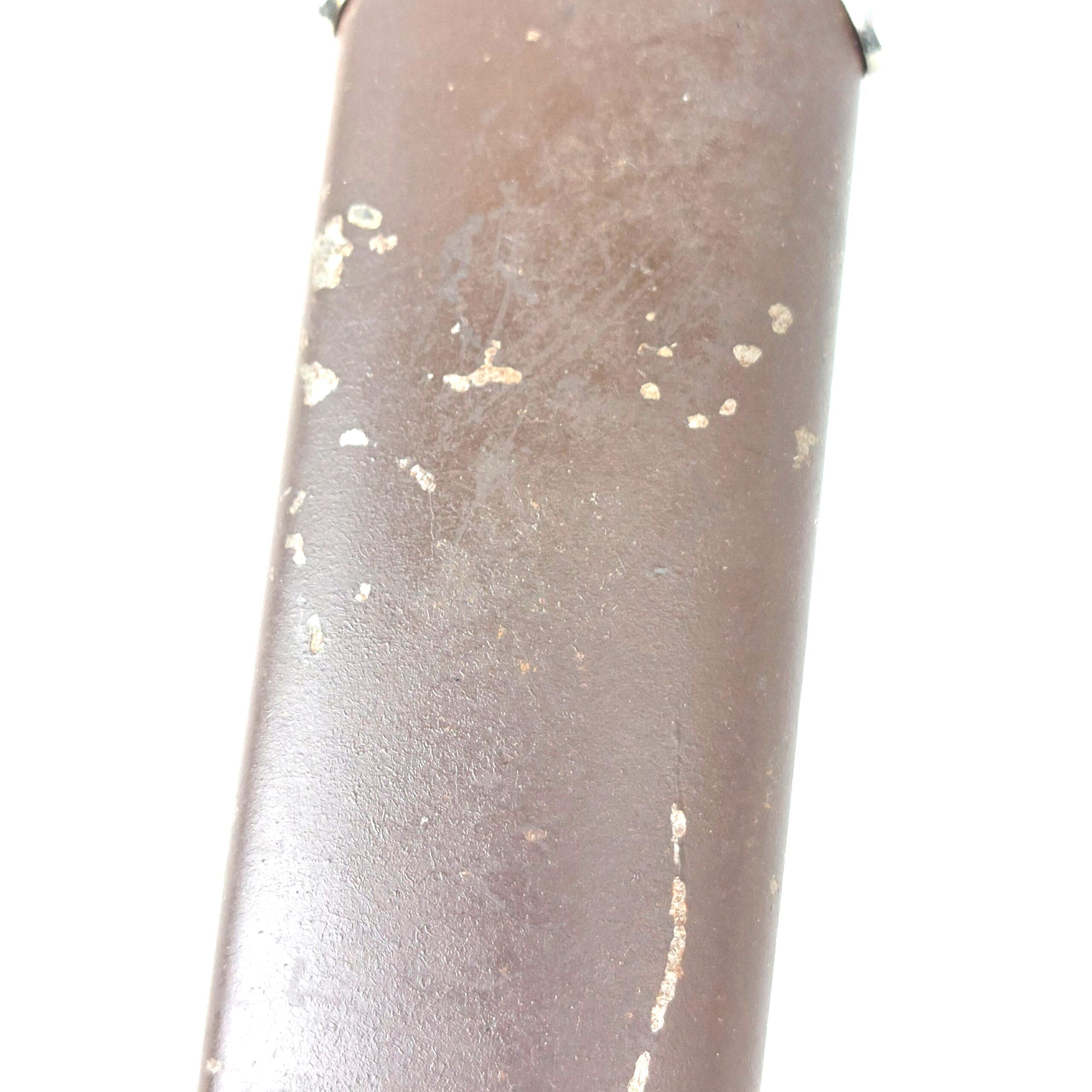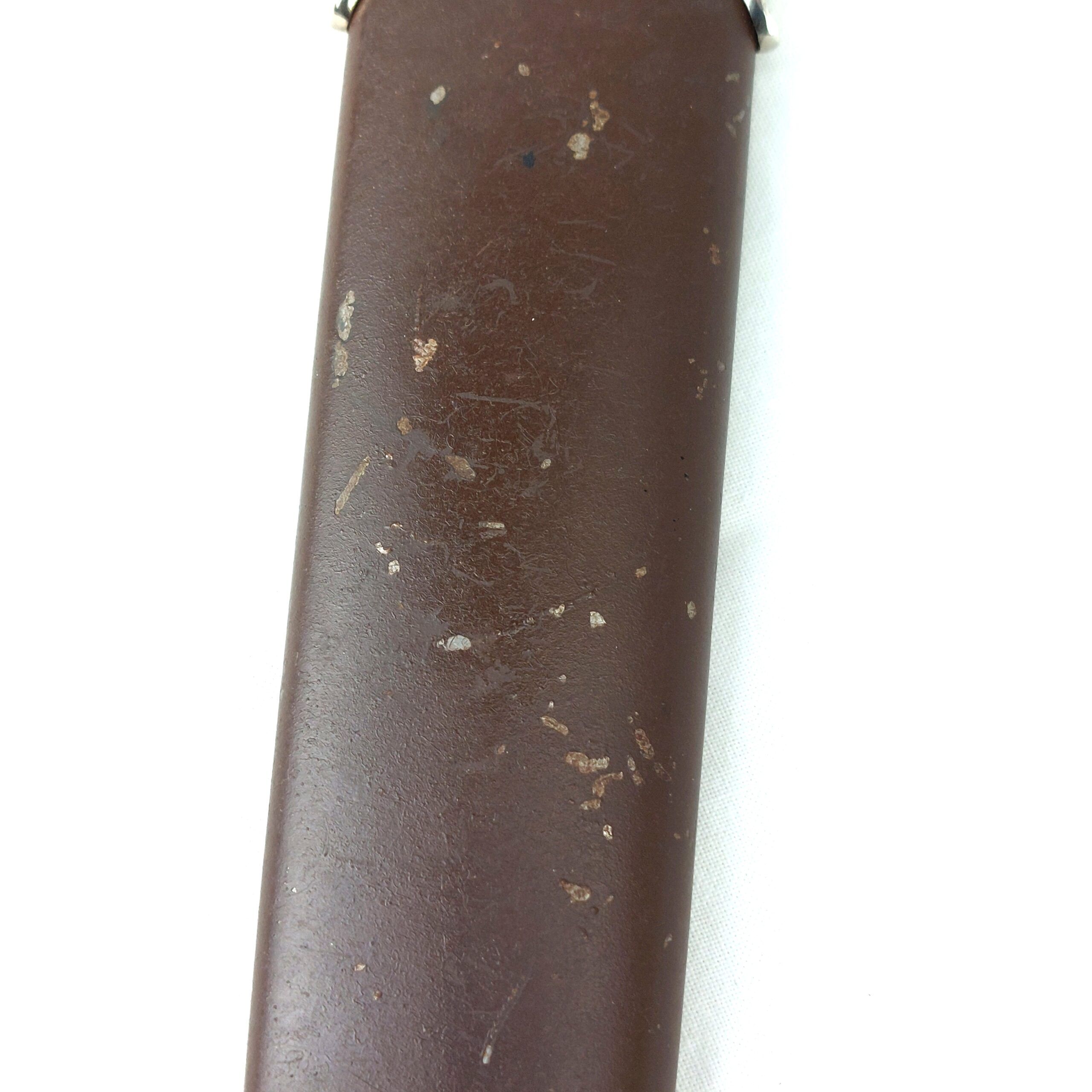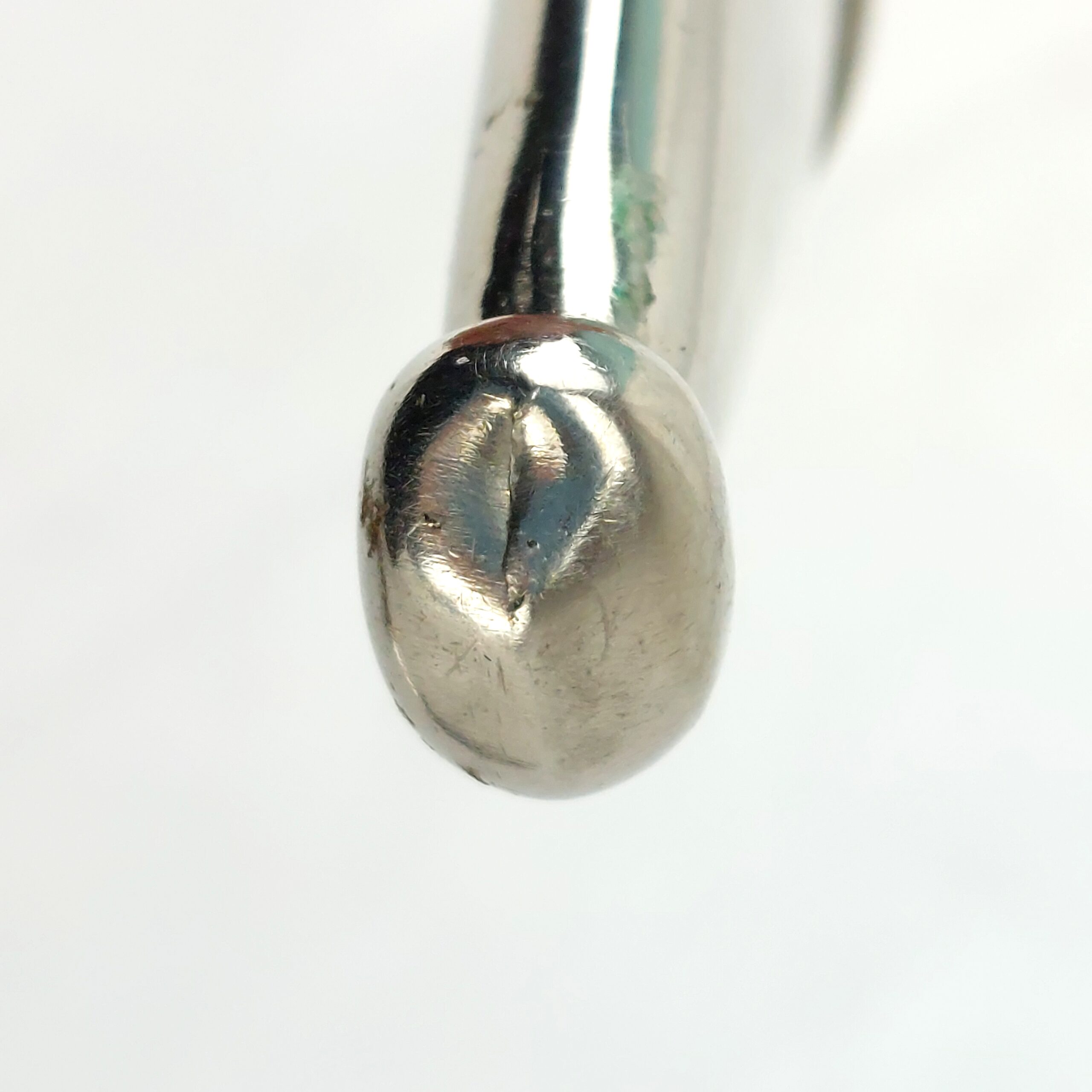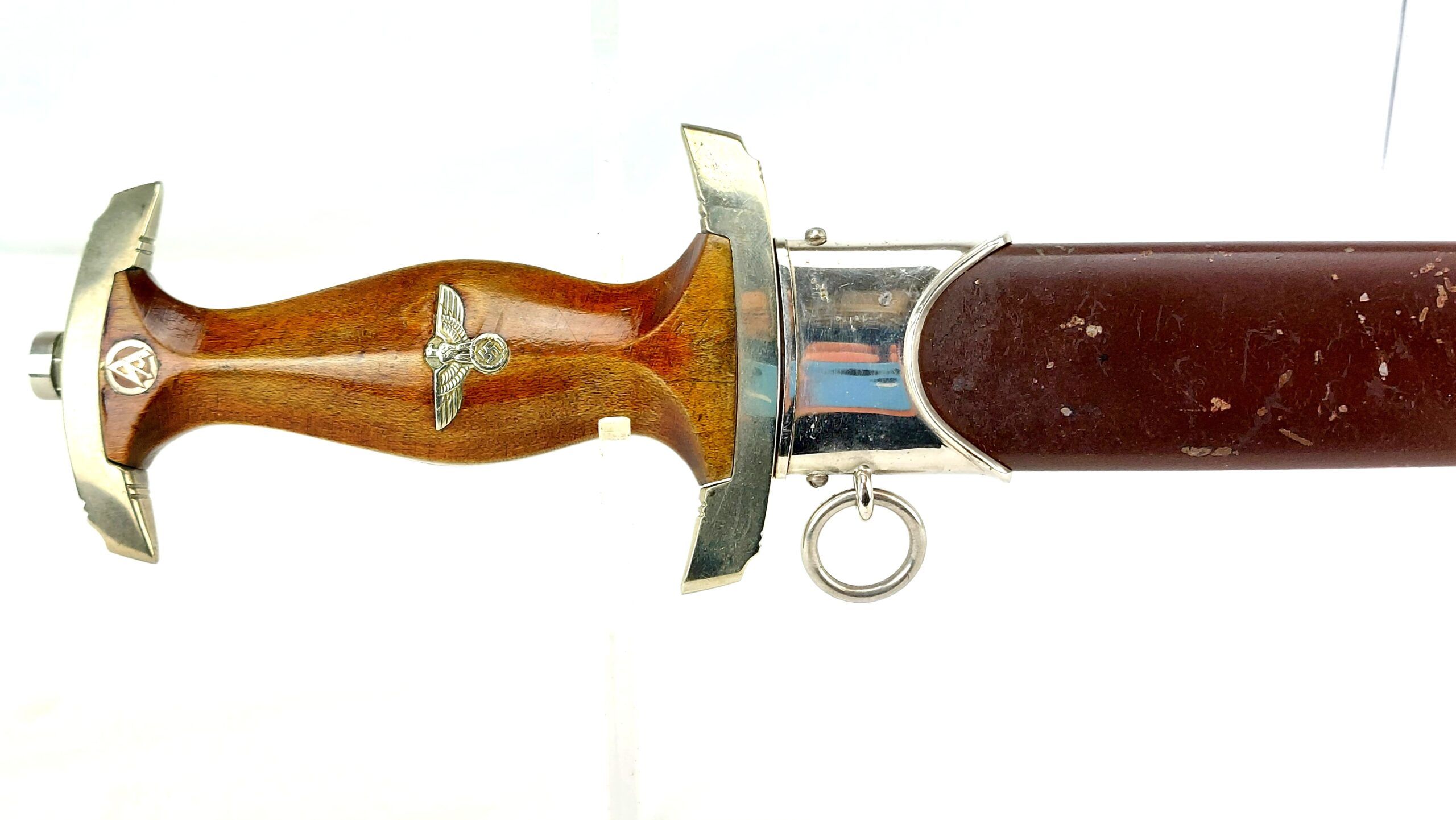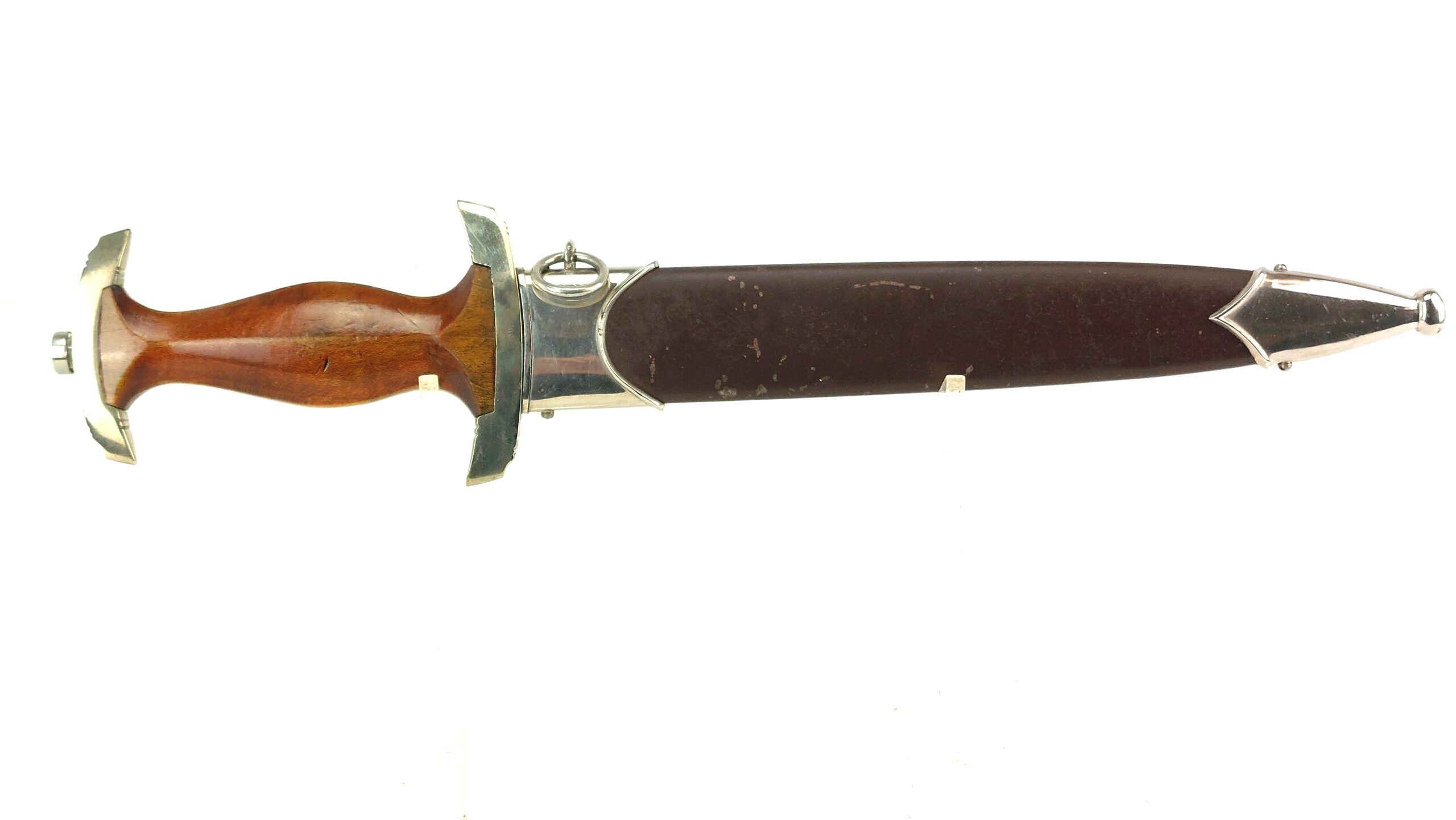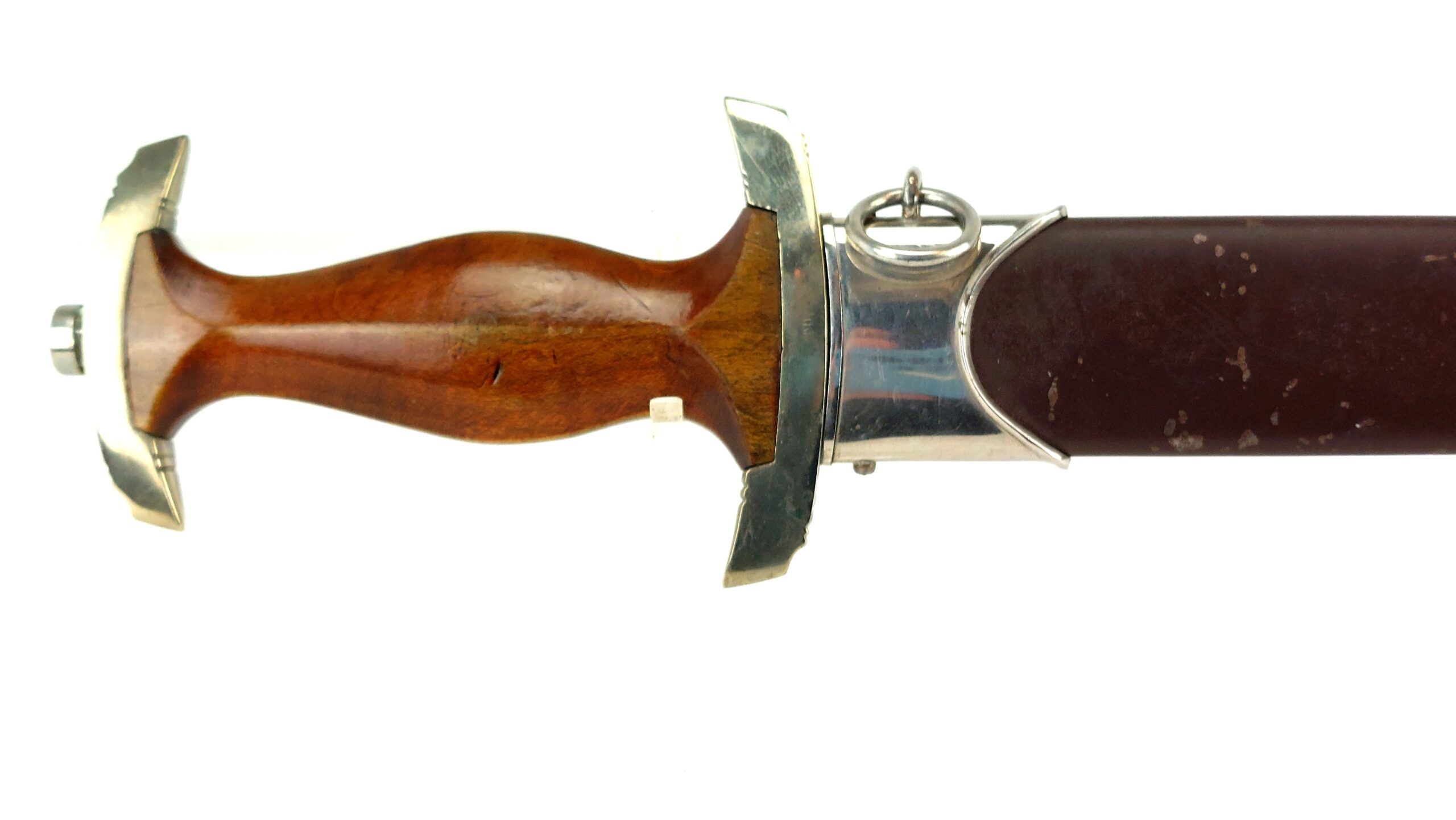*German, WW2, Early Sturmabteilung SA Army Honour Dagger & Scabbard, Maker Marked Earnst Pack & Sohne Solingen, Gau Marked NRH for Niederrhein District*
Approx measurements: 21.9cm blade, 34.5cm overall
Marked on the ricasso: E.P & S, Solingen
Marked on the obverse blade: “Alles für Deutschland”
Marked on crossguard: NRH
This is an early, maker marked, SA Honour Dagger by E.P & S, Solingen. Pre-1935 SA daggers were usually stamped with the SA group stamp (Gau) to the reverse of the lower cross guard. This cross guard has the Gau mark “NRH” signifying it was issued in the region of Niederhein.
This is very good example with nickel mounts, the blade etched “Alles für Deutschland” bearing the makers dancer logo. The brown wooden grip inlaid with silvered eagle and swastika and enamelled SA logo. The pommel nut looks pristine. The cross guard is engraved Nrh for the Niederrhein District. The dagger is housed in the correct brown anodised scabbard with nickel mounts, the top mount with a single suspension ring.
The daggers produced by Ernst Pack & Söhne are particularly collectible due to their craftsmanship and association with the early, formative years of Nazi military history.
Background:
The Sturmabteilung (SA), or “Brown Shirts,” formed in 1921 as the Nazi Party’s original paramilitary force. Co-founded by Adolf Hitler and Ernst Röhm, the SA was initially composed of WWI veterans and members of the Freikorps, a post-war paramilitary group. The SA’s main purpose was to provide security at Nazi rallies, intimidate political opponents, and carry out street-level violence to promote Nazi ideology. The SA played a pivotal role in the Nazi rise to power during the 1920s and early 1930s, with its aggressive tactics and strong-arm approach giving the party a militant presence.
However, the SA’s growing power and influence, especially under Röhm’s leadership, became a threat to Hitler’s control. In 1934, during the “Night of the Long Knives,” Röhm and many SA leaders were purged by the SS under Hitler’s orders, significantly weakening the organization and reducing its role to a ceremonial body. Like many Nazi branches, the SA adopted paramilitary uniforms and insignia, including the distinctive SA dagger.
The SA Dagger:
The SA dagger was introduced in 1933 as a standard service dagger for its members and symbolized loyalty and service to the SA and Nazi ideology. It was designed by Professor Woenne and modeled after a traditional German dagger displayed in the Munich City Museum. The dagger bore the inscription “Alles für Deutschland” (“All for Germany”) on its blade, and its early models featured high-quality materials such as hand-fitted nickel fittings, hardwood grips, and brown anodized scabbards. Produced by 123 different manufacturers, the dagger went through variations as production increased, including the shift to less expensive plated zinc-based fittings and painted scabbards.
Initially, pre-1935 SA daggers were stamped with an SA group code on the reverse of the lower crossguard to indicate the distribution group. However, after 1935, the introduction of the Reichszeugmeisterei (RZM) codes mostly replaced these markings as the central licensing authority for all Nazi-related items. On May 19, 1936, NSKK-Korpsführer Adolf Hühnlein ordered all NSKK dagger scabbards to be black painted or factory-anodized to differentiate from the SA.
Ernst Pack & Söhne:
One of the notable manufacturers of SA daggers was Ernst Pack & Söhne. Originally founded in 1909 as “Pack, Ohliger & Co. GmbH,” the company began as a maker of swords, bayonets, and daggers under the trademark “Jung Siegfried.” After the departure of co-founder Robert Ohliger in 1922, the company rebranded as Ernst Pack & Söhne. E. Pack was heavily involved in the earliest era production pieces of the NSDAP., including SS prototype daggers. Come 1935, Pack did not receive an RZM license where 65 other manufacturers did. Production then concentrated on the Wehrmacht sidearms including: Luftwaffe, Army and Navy daggers along with many dress, etched and combat bayonets and swords etc.
In 1938/39, E. Pack was awarded the SS contract code RZM 1211/38 SS. “The Waffen von Pack” 1938 catalogue features edged weapons for the: Wehrmacht, forestry service, fire brigade, RAD, customs, police and mining officials. After WWII, E. Pack registered with the Solingen Chamber of Commerce in 1951, in the 1960s it was sold to Hans-Joachim Haug. The company later merged with E. & F. Hörster until it closed in 1996.
*Condition*
The dagger is in great overall condition. There are some scuff marks and scratches to the grip. Minor service wear and possible faults around SA logo. The double edged blade is sharp. The scabbard fits firmly and there are scuff marks to the scabbard and small dent to the finial. Please see photographs as part of the condition report.
RQMDEOXGEO_5264181188


